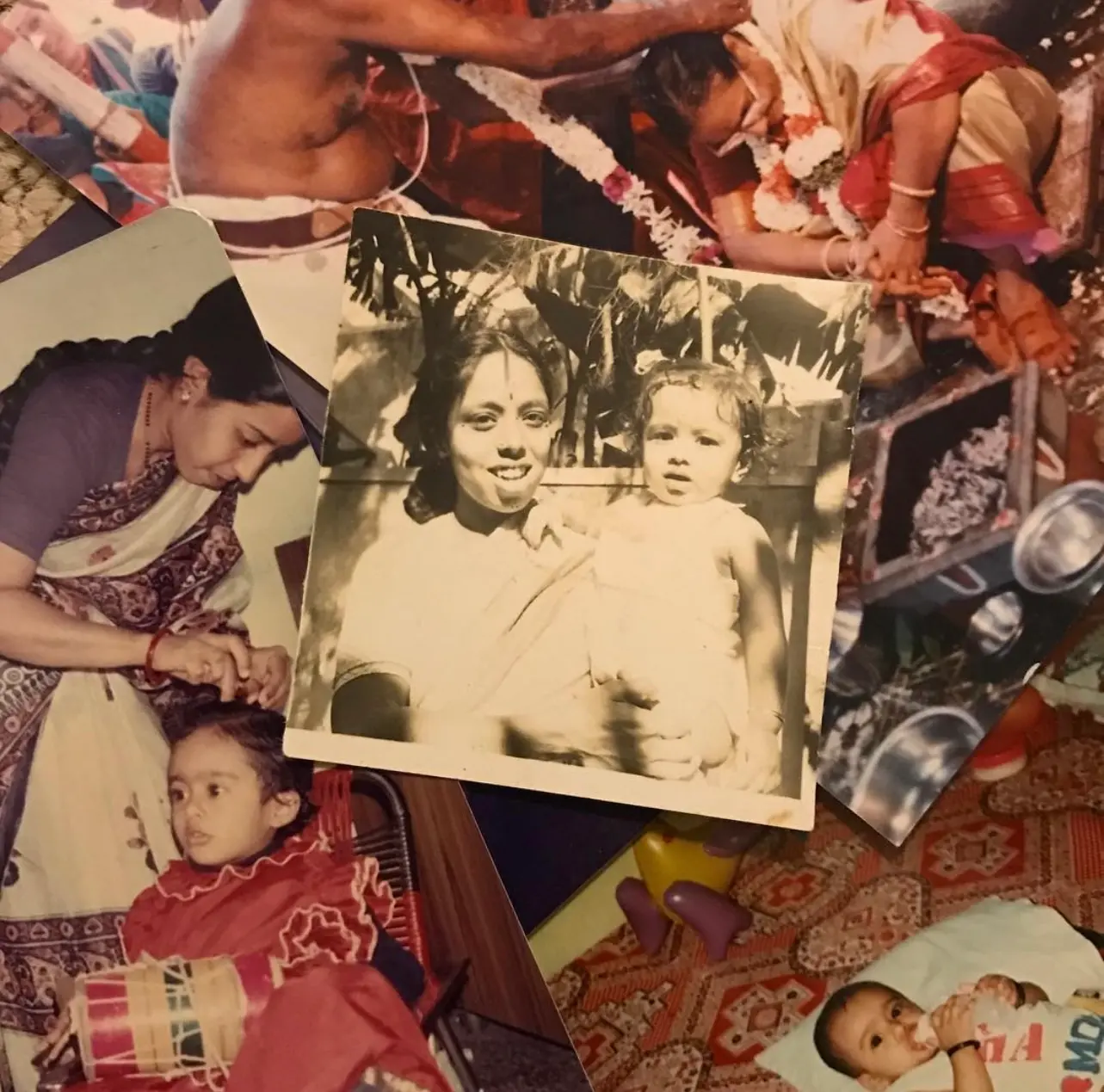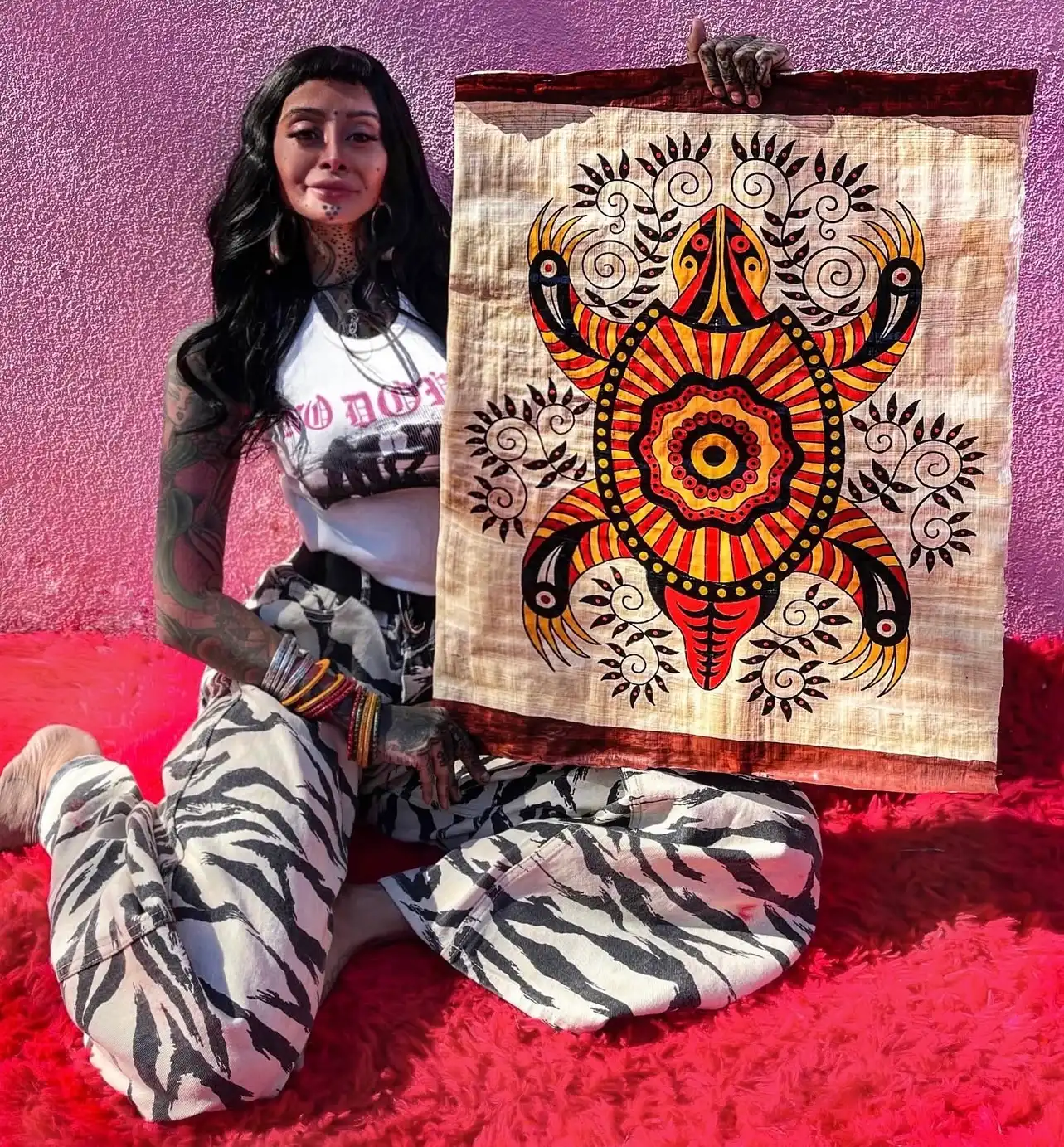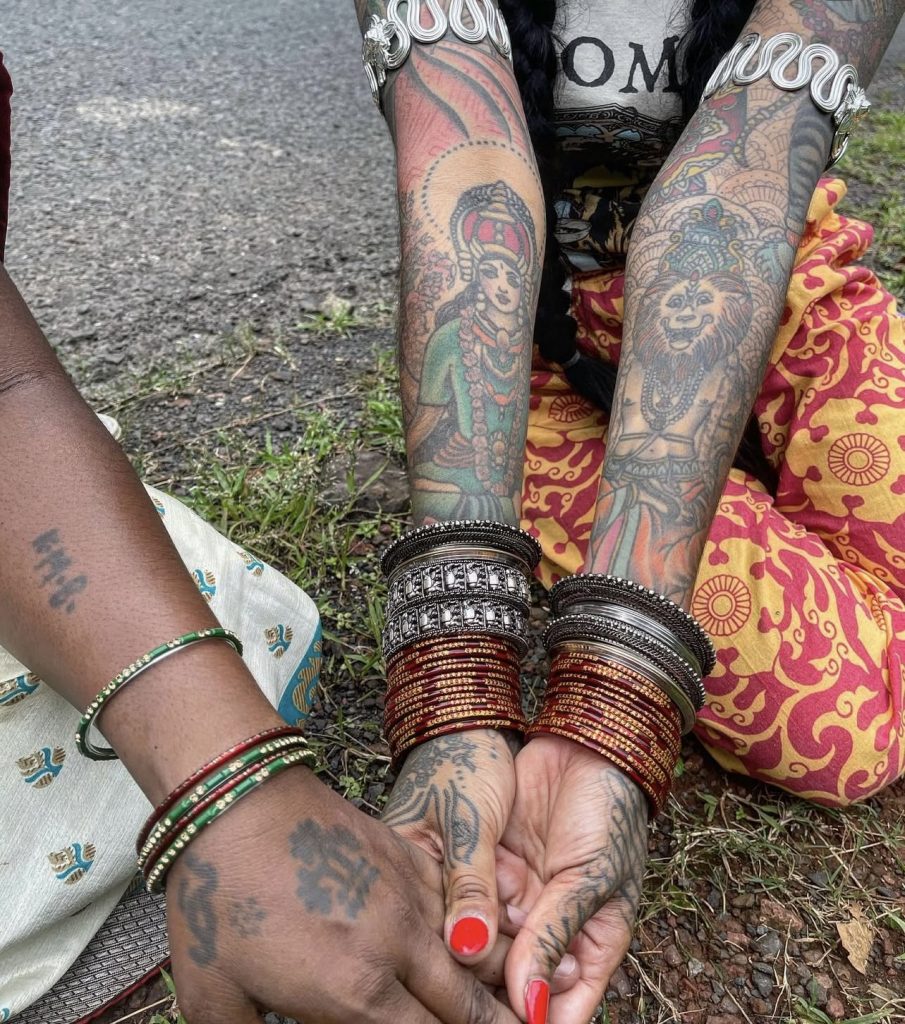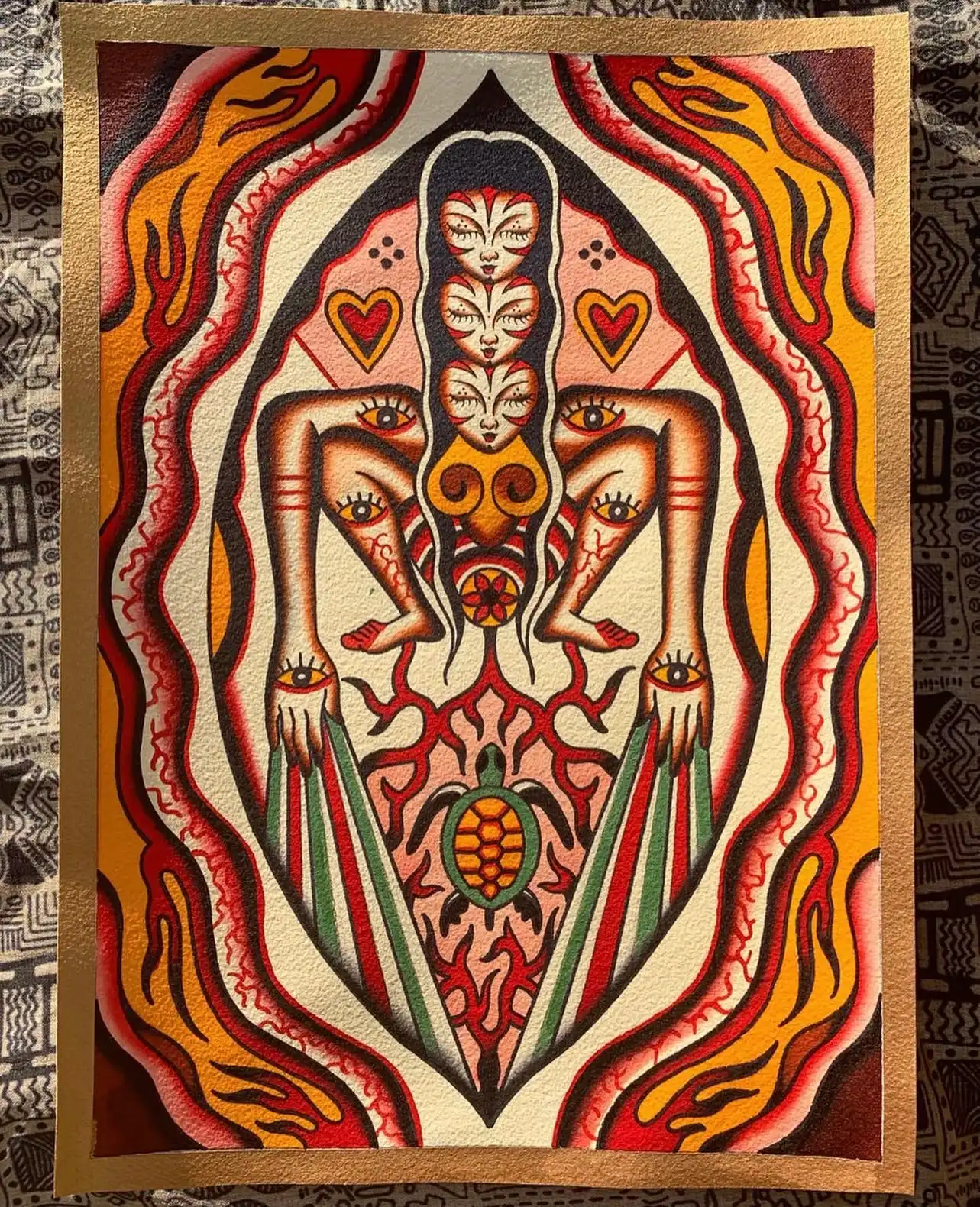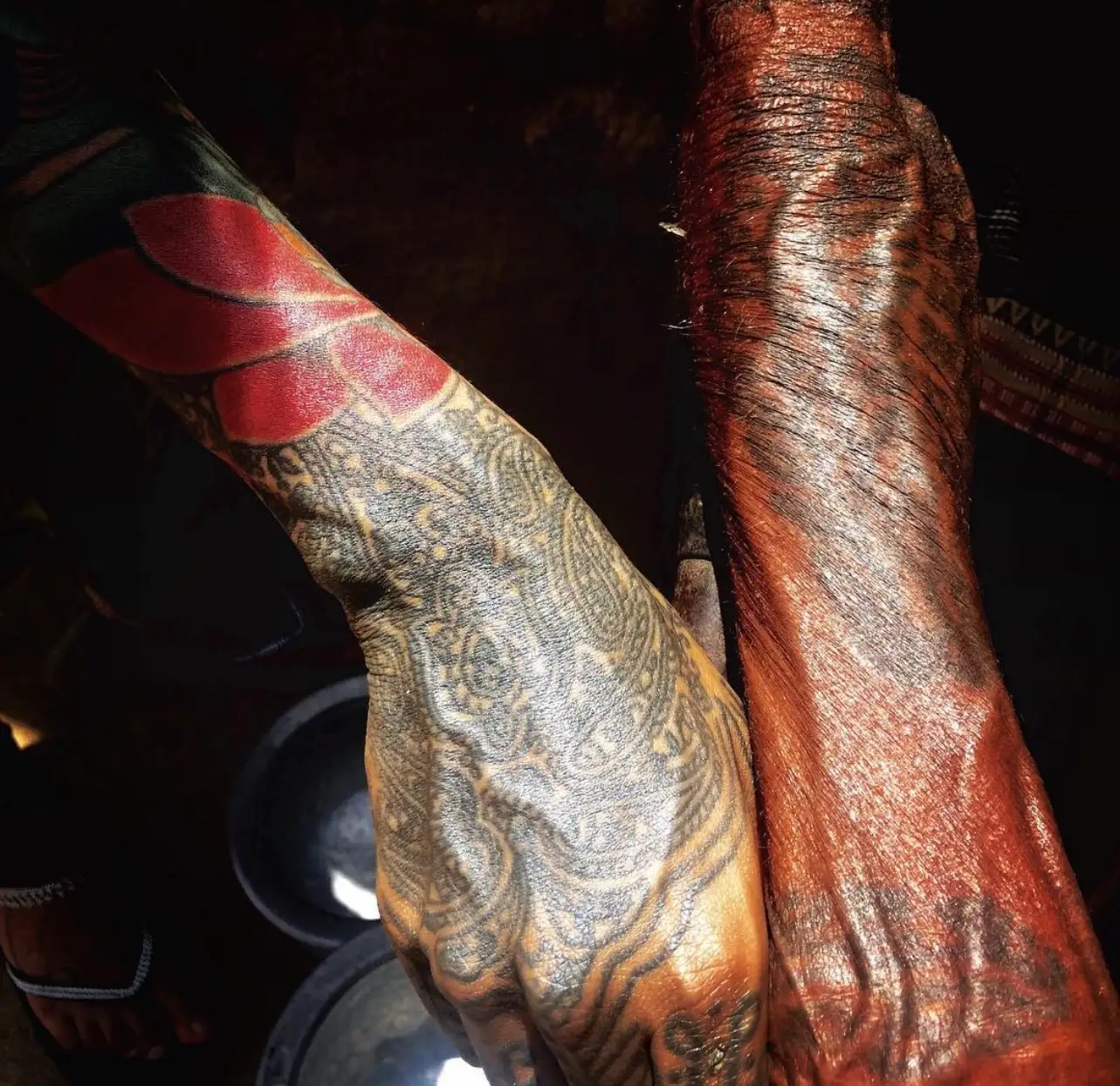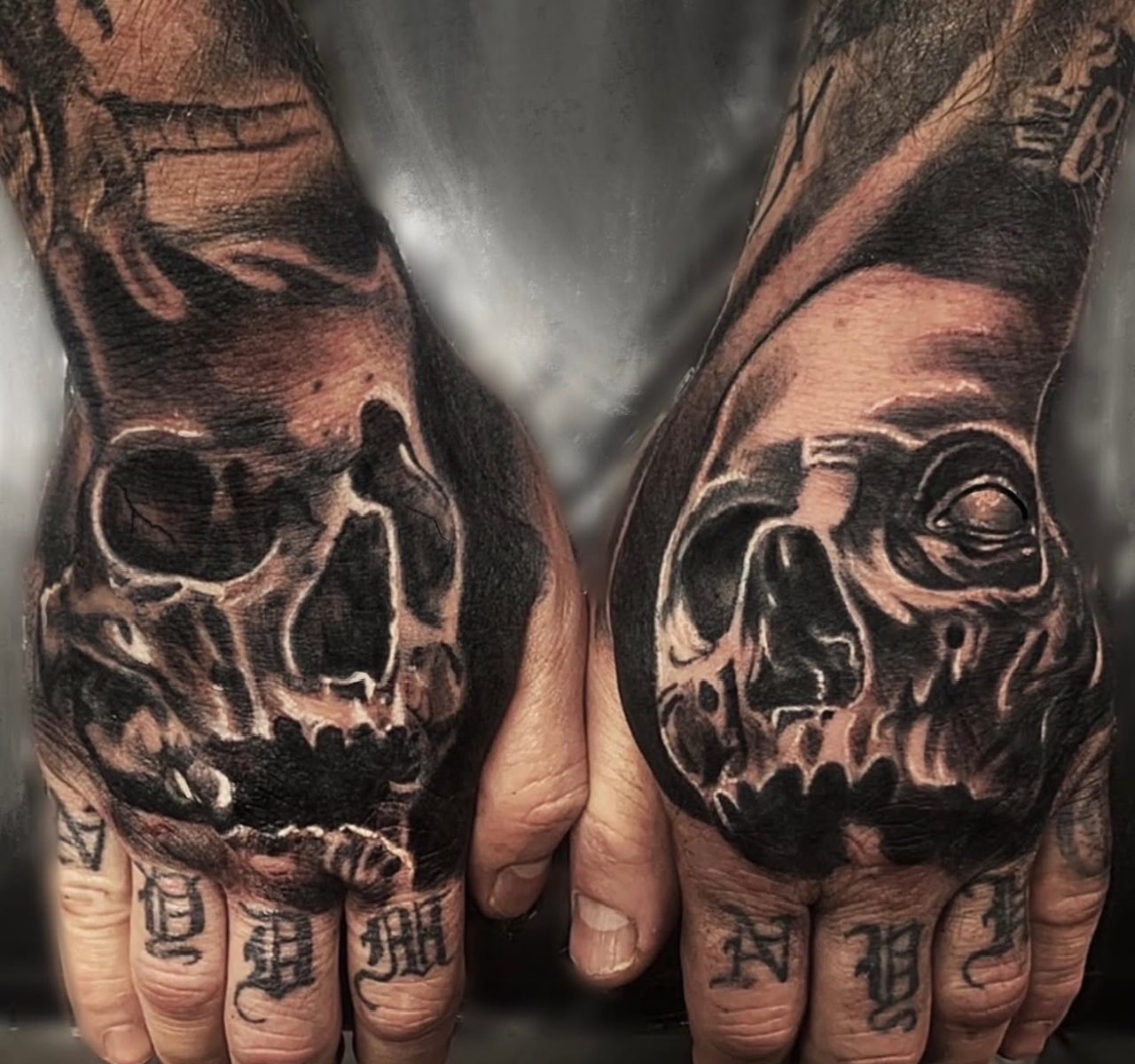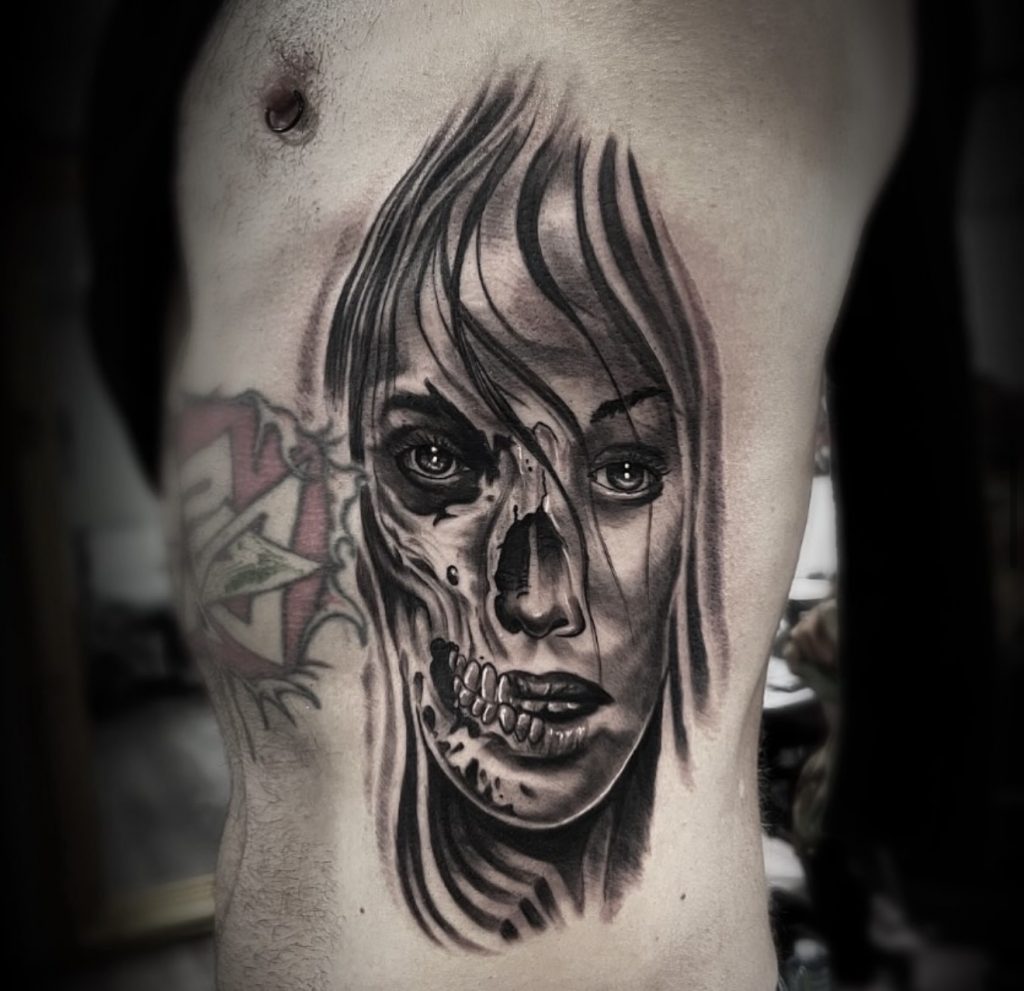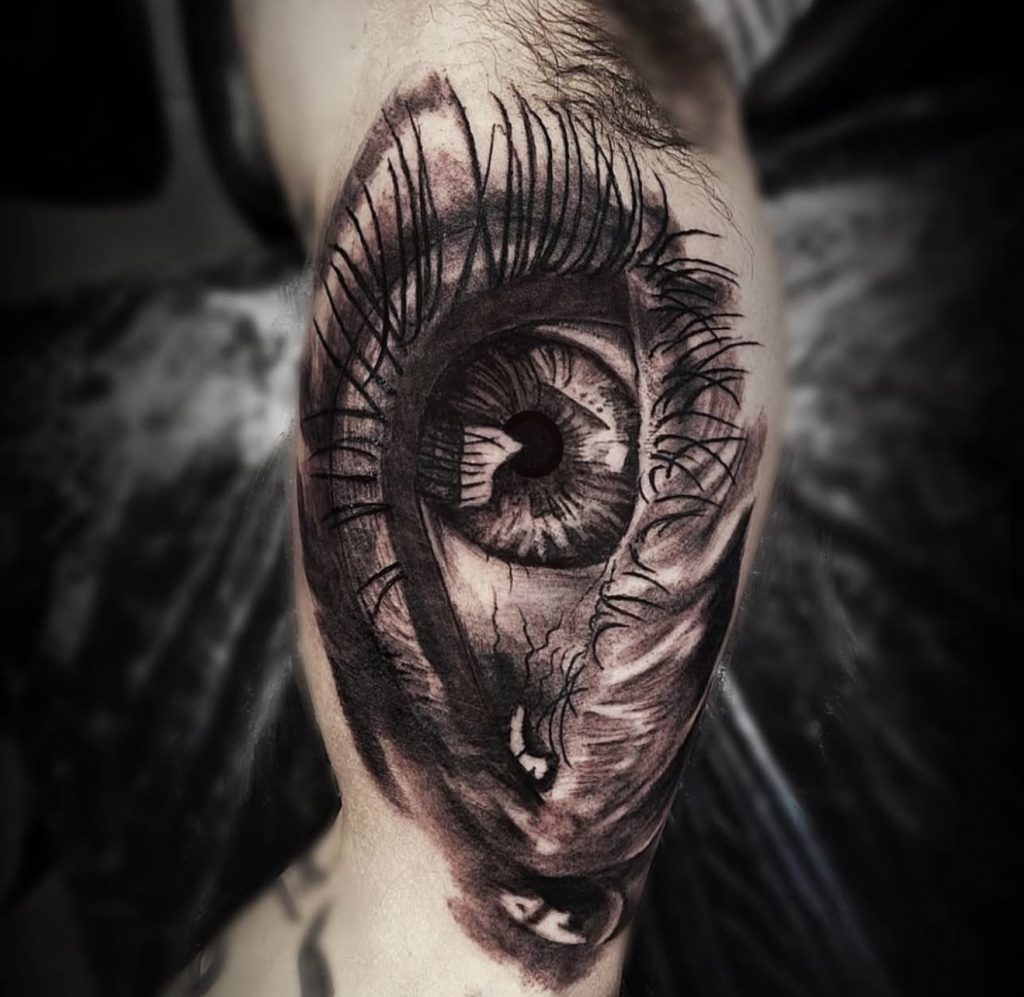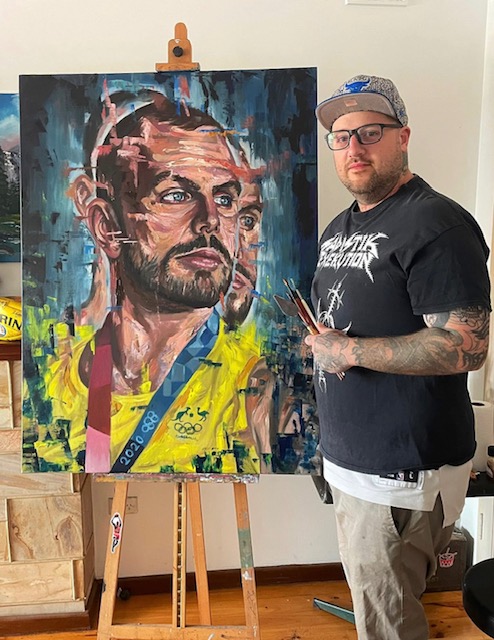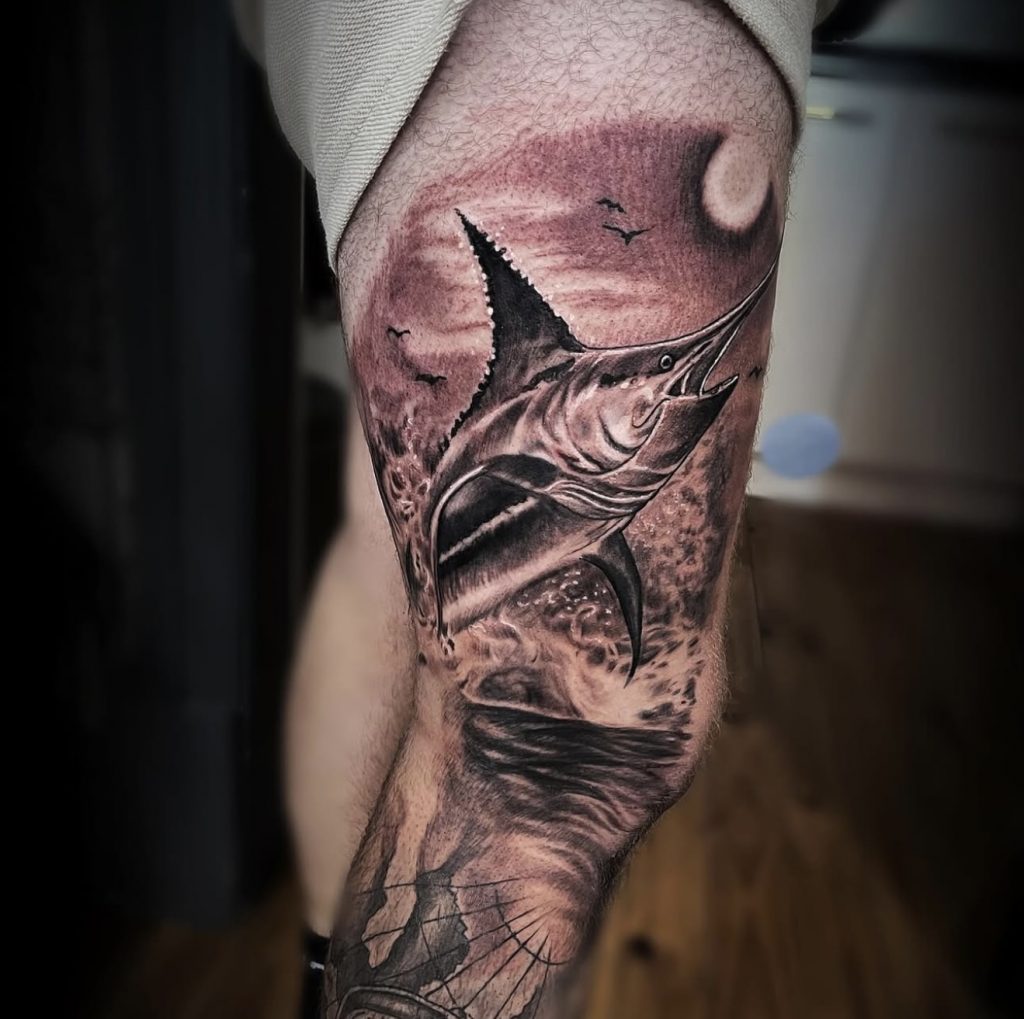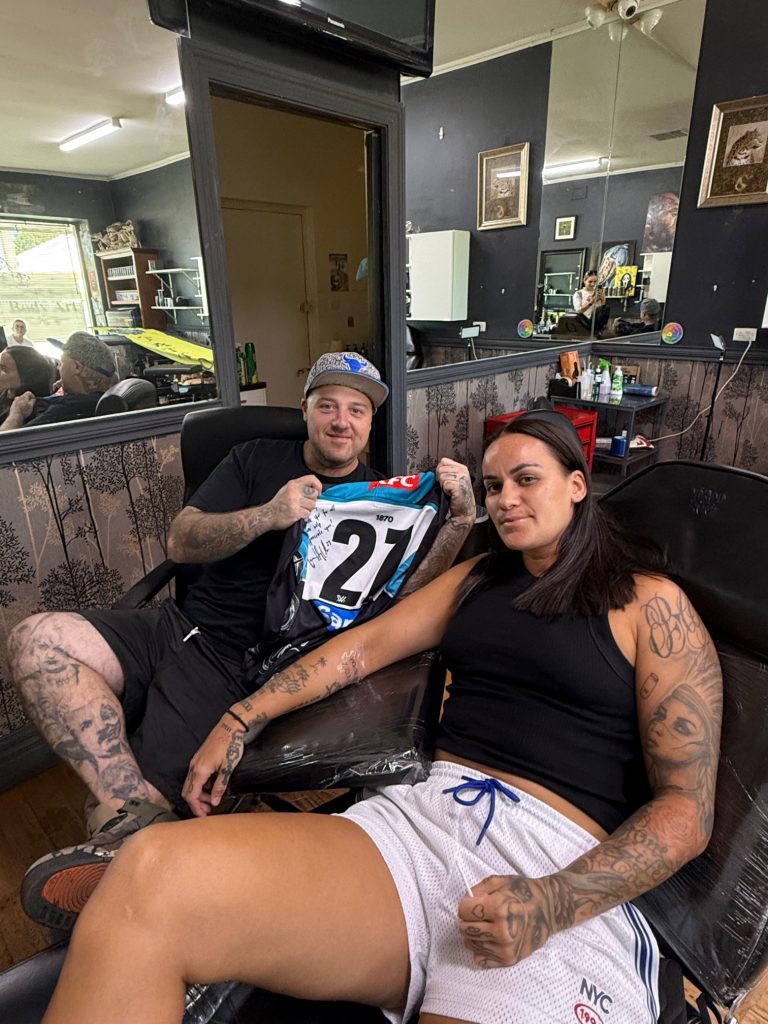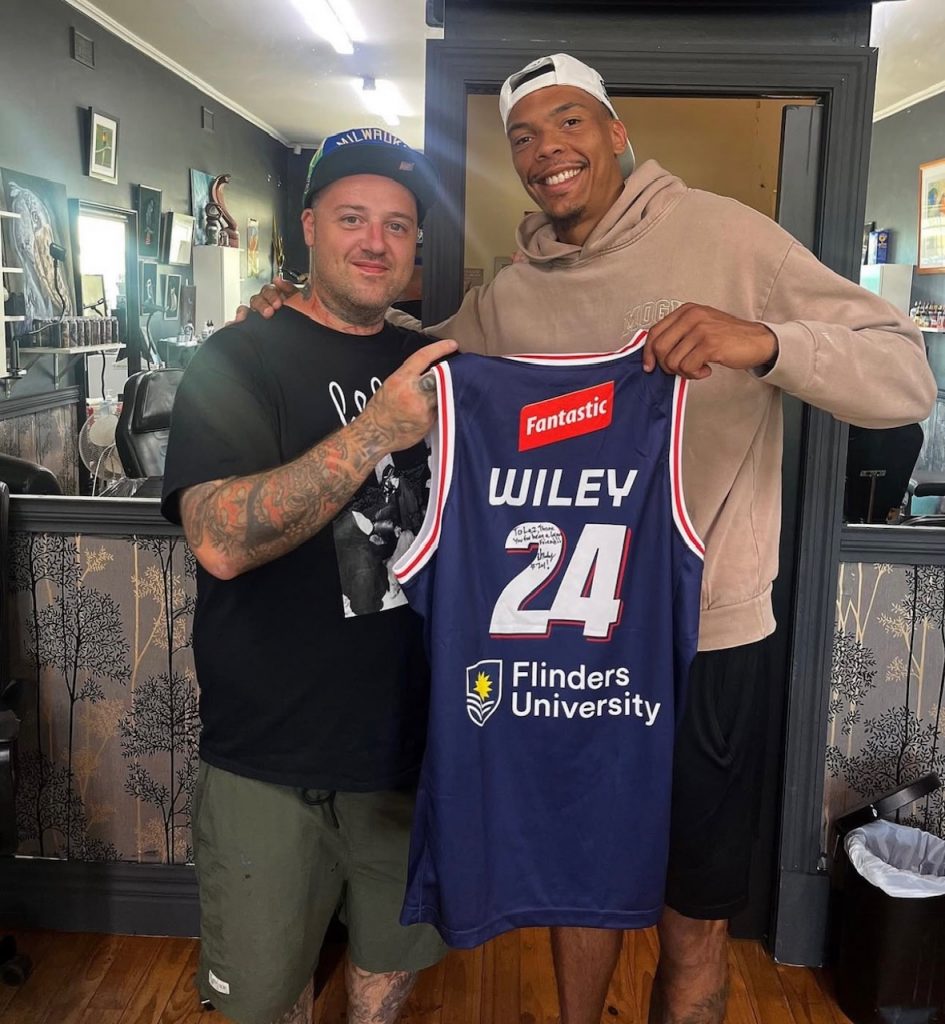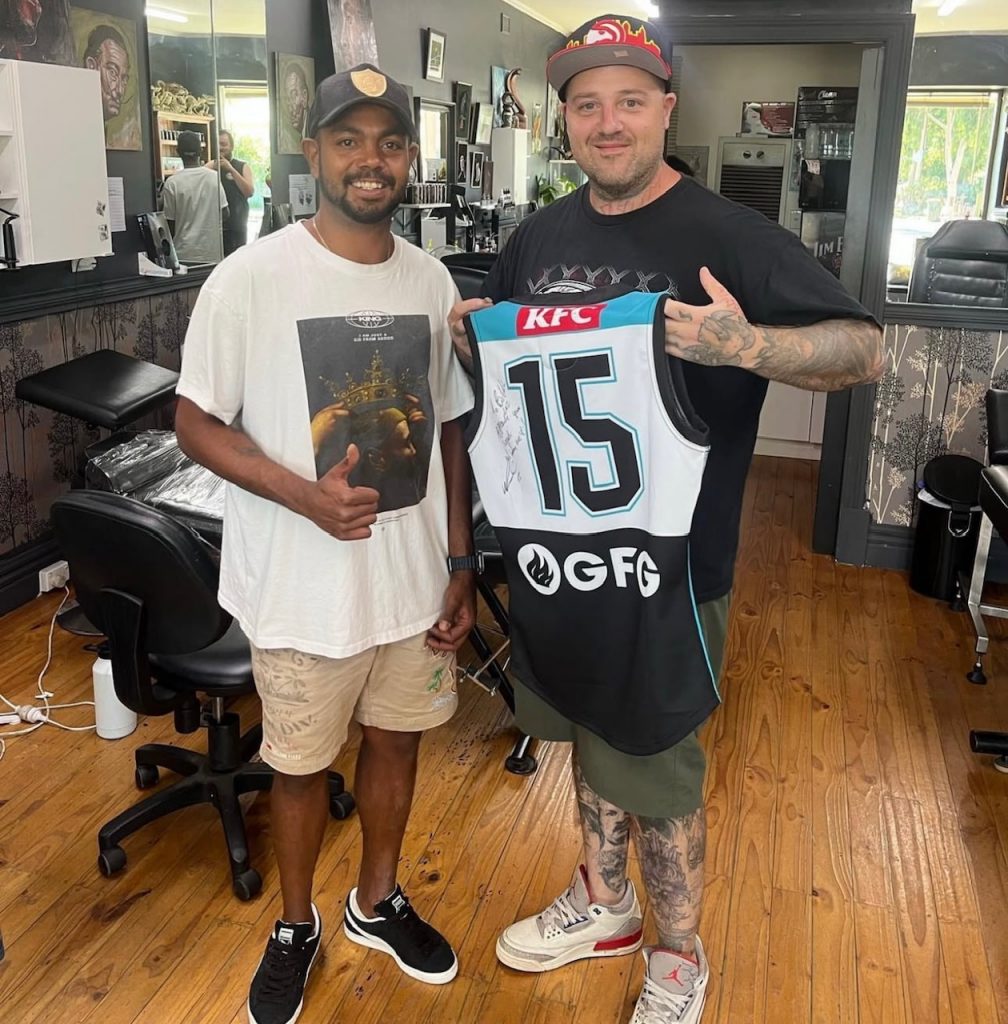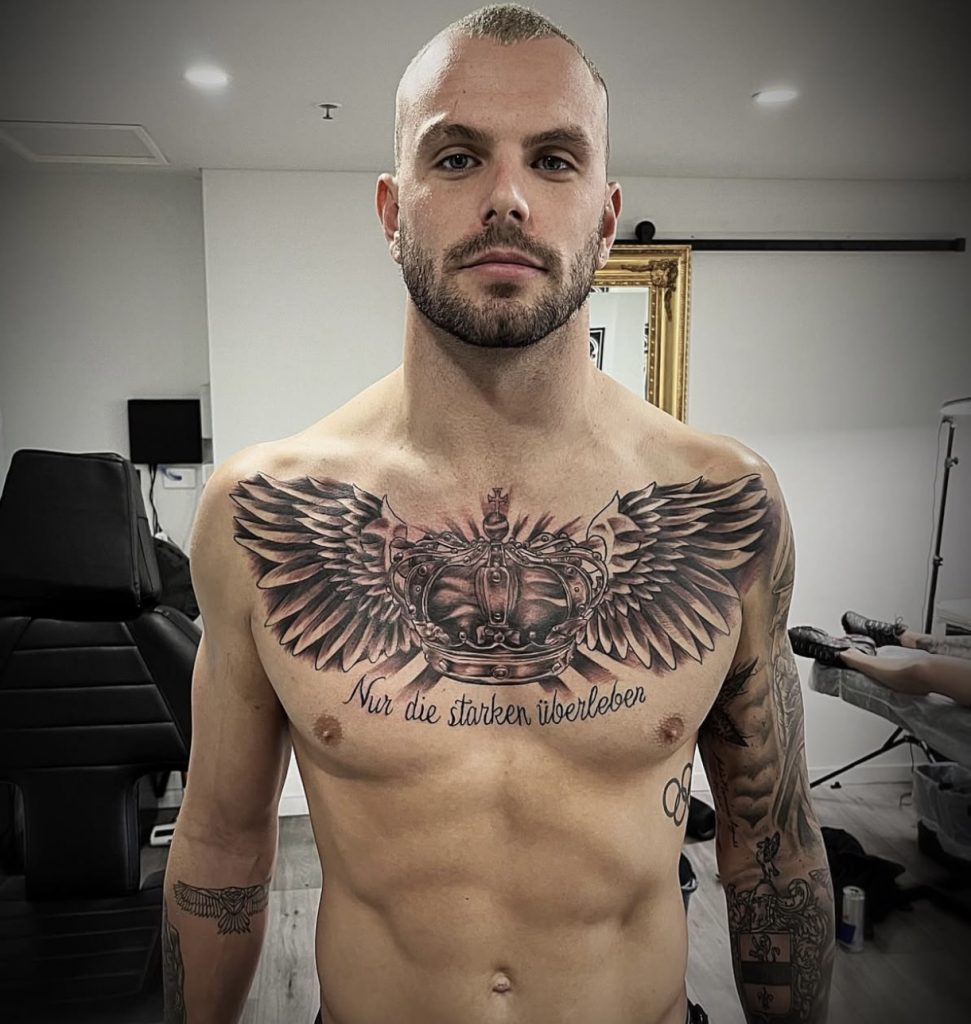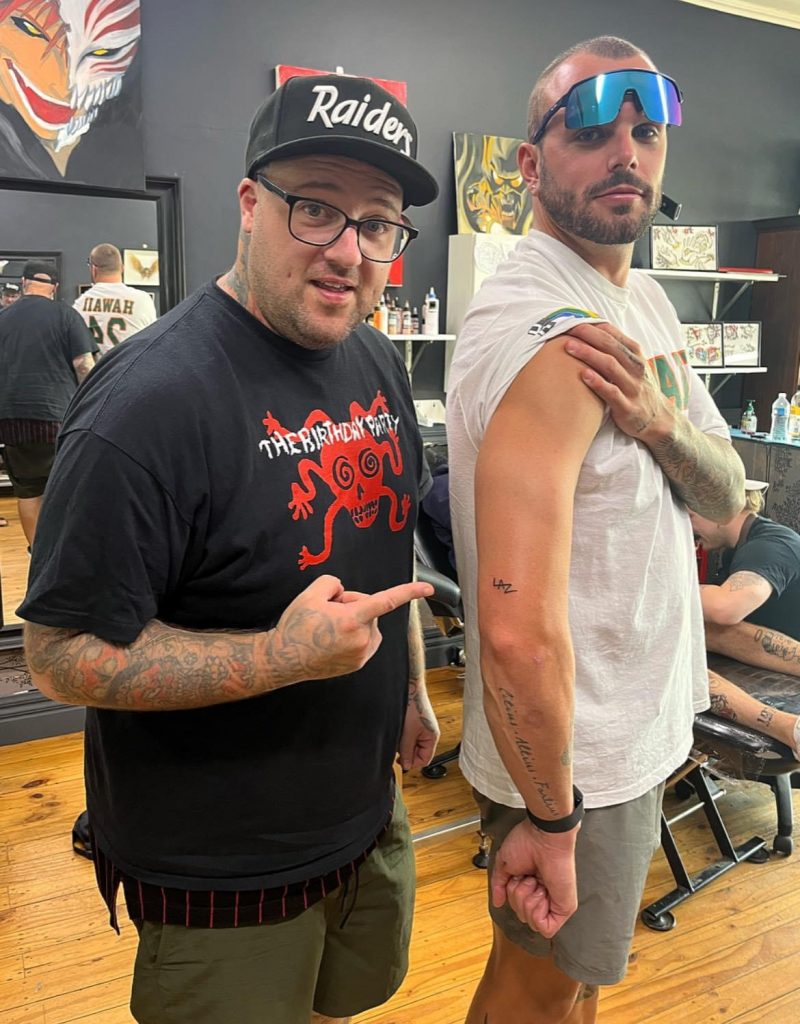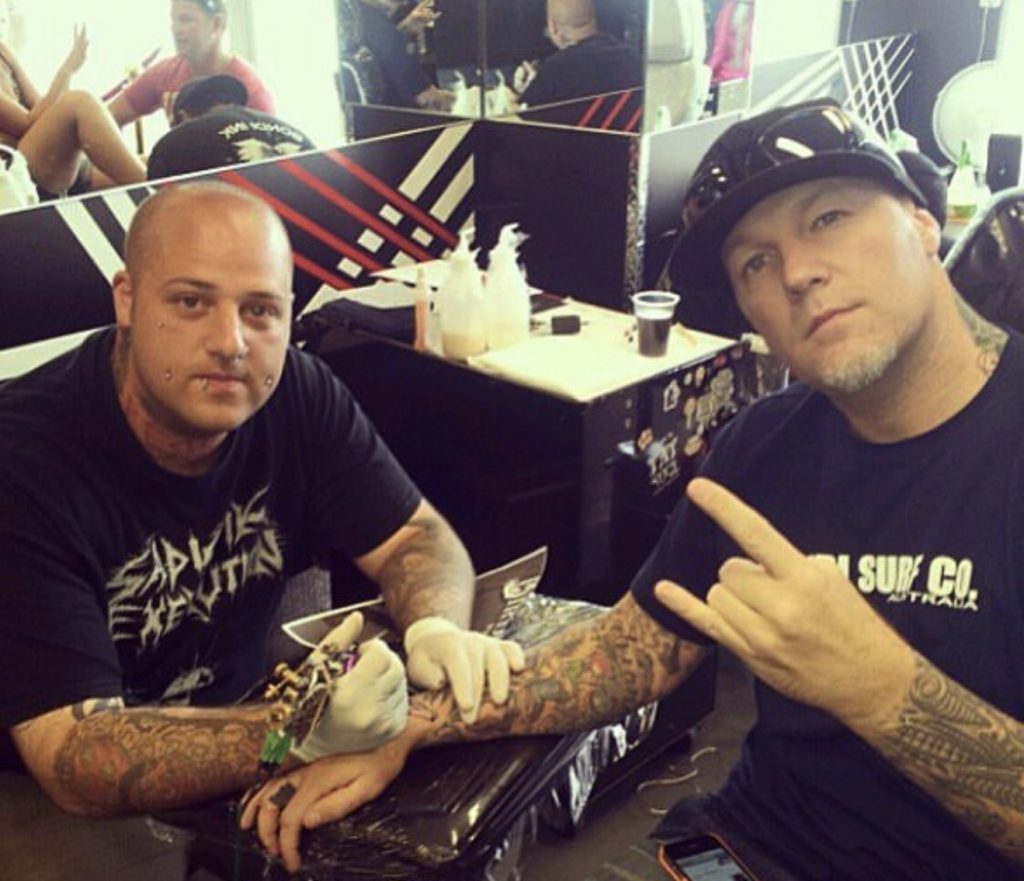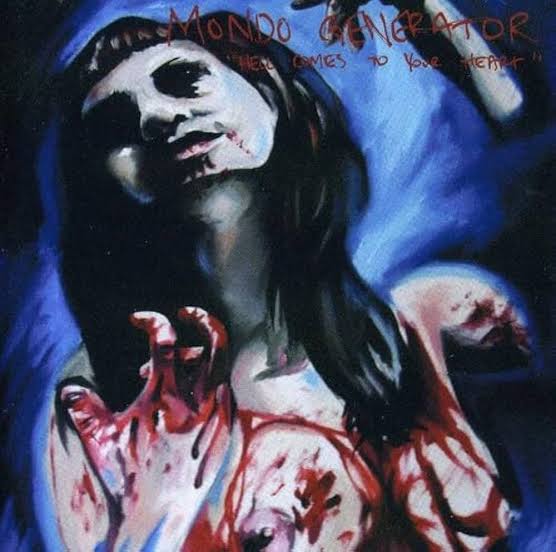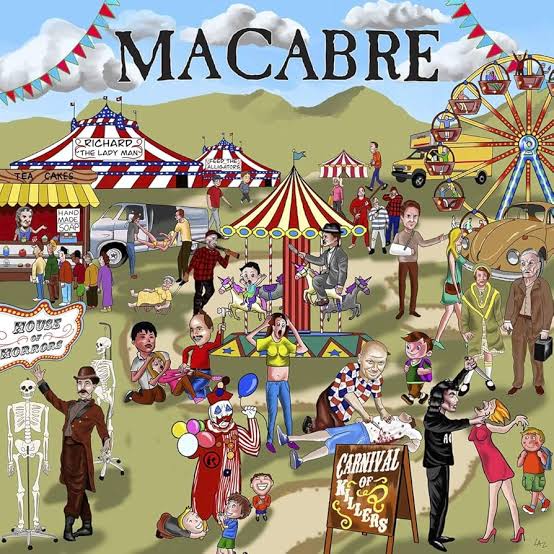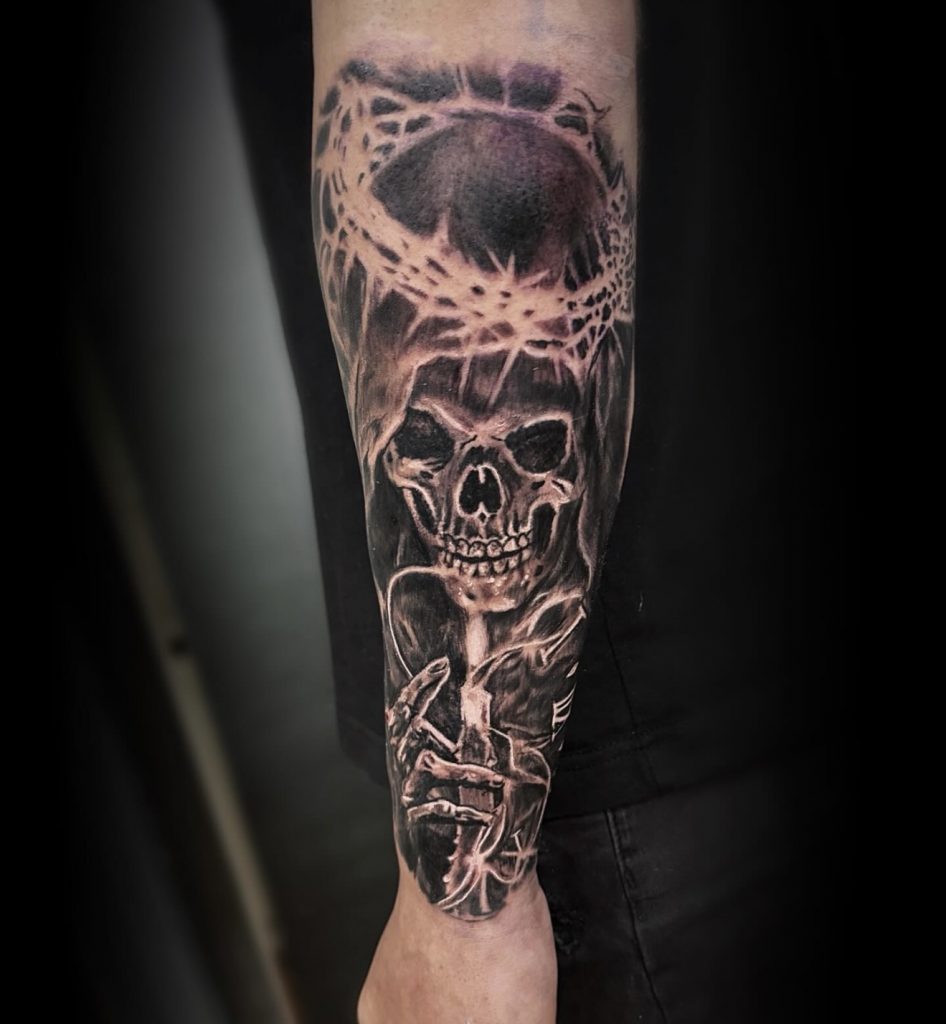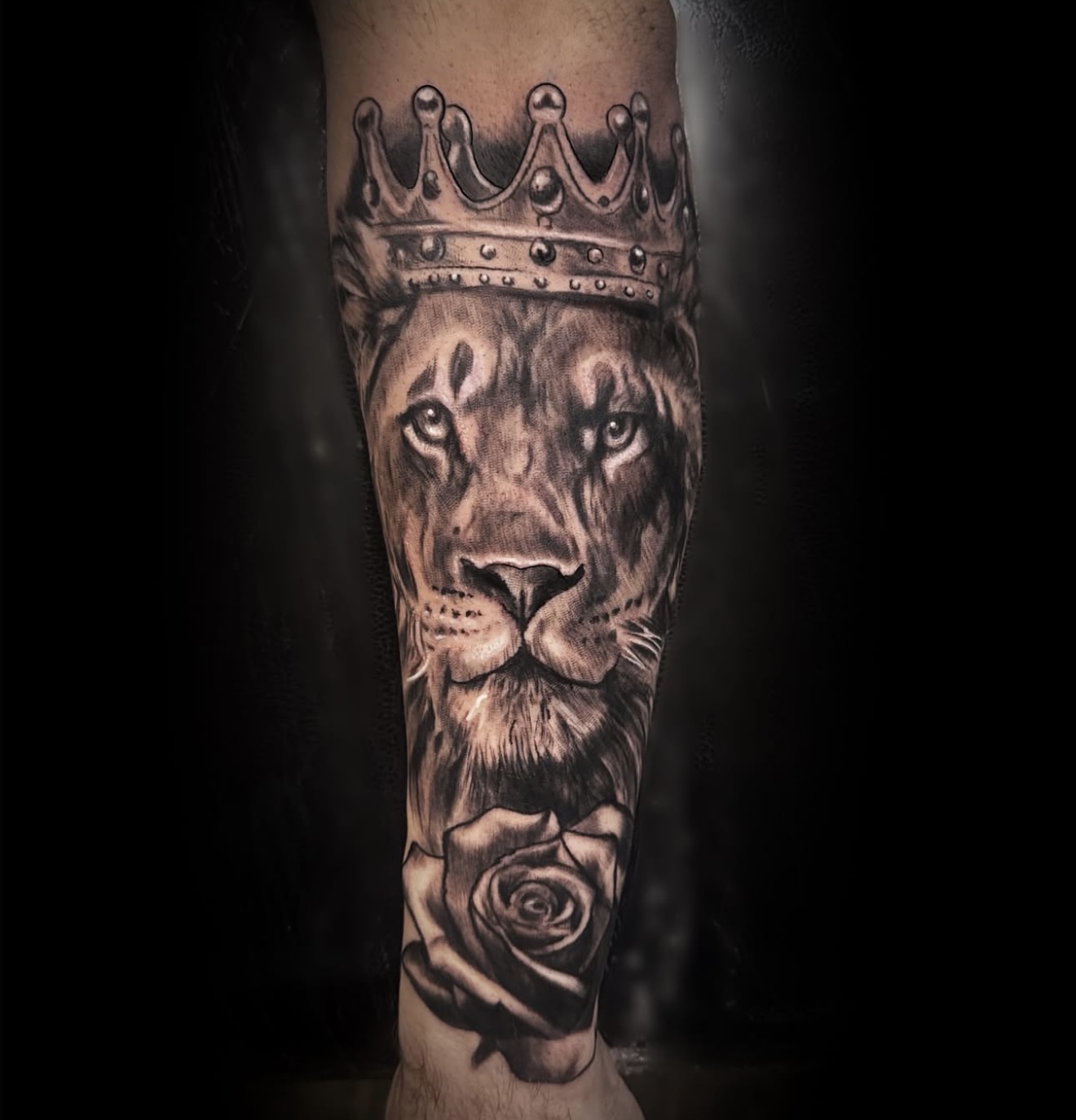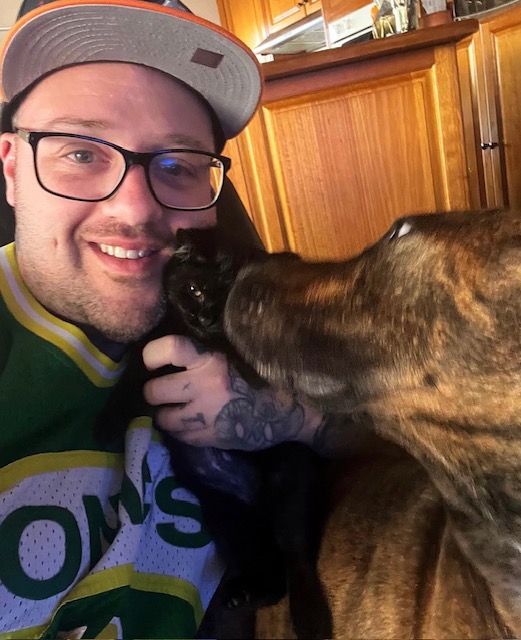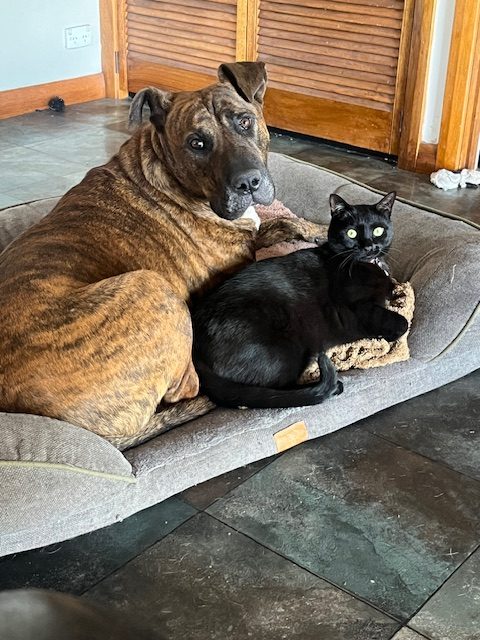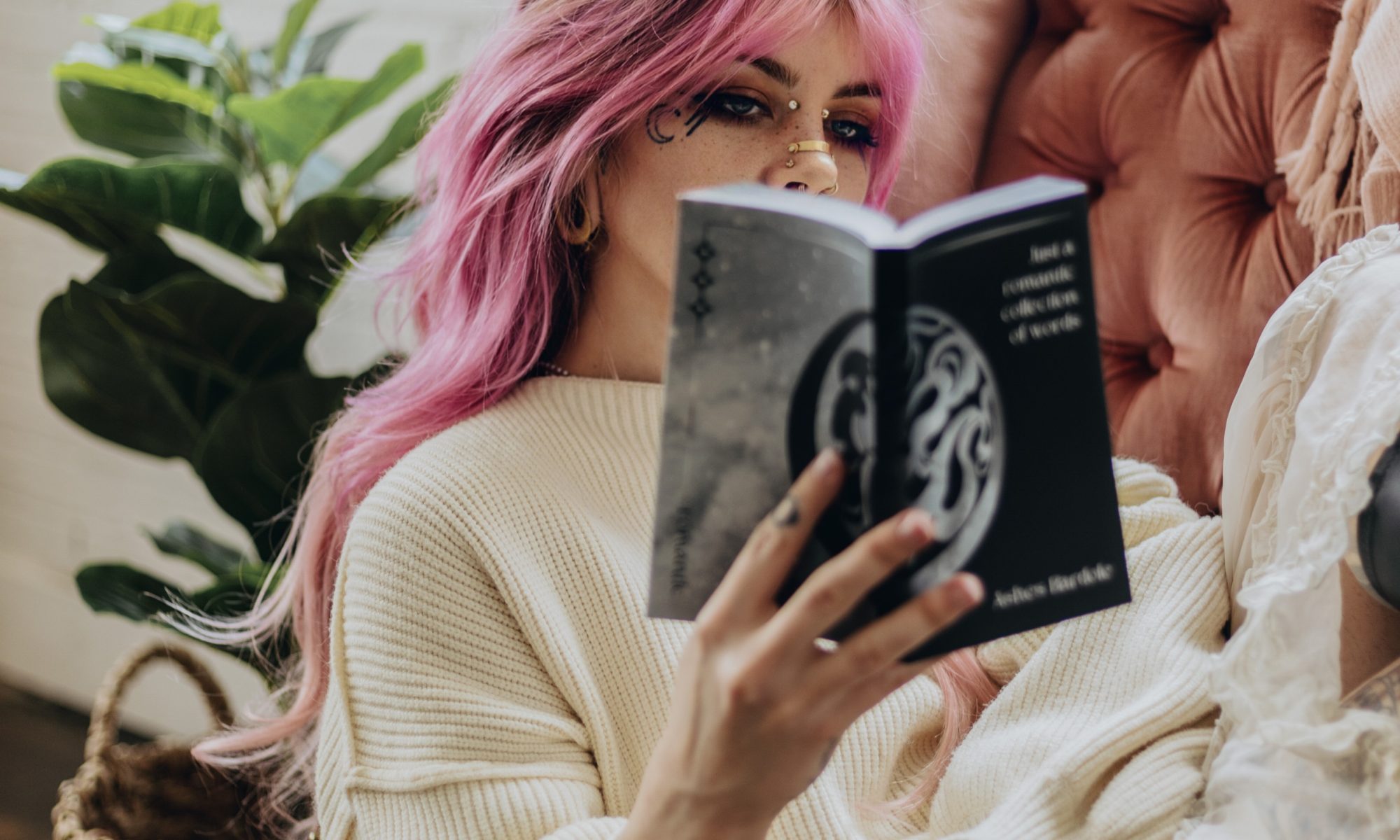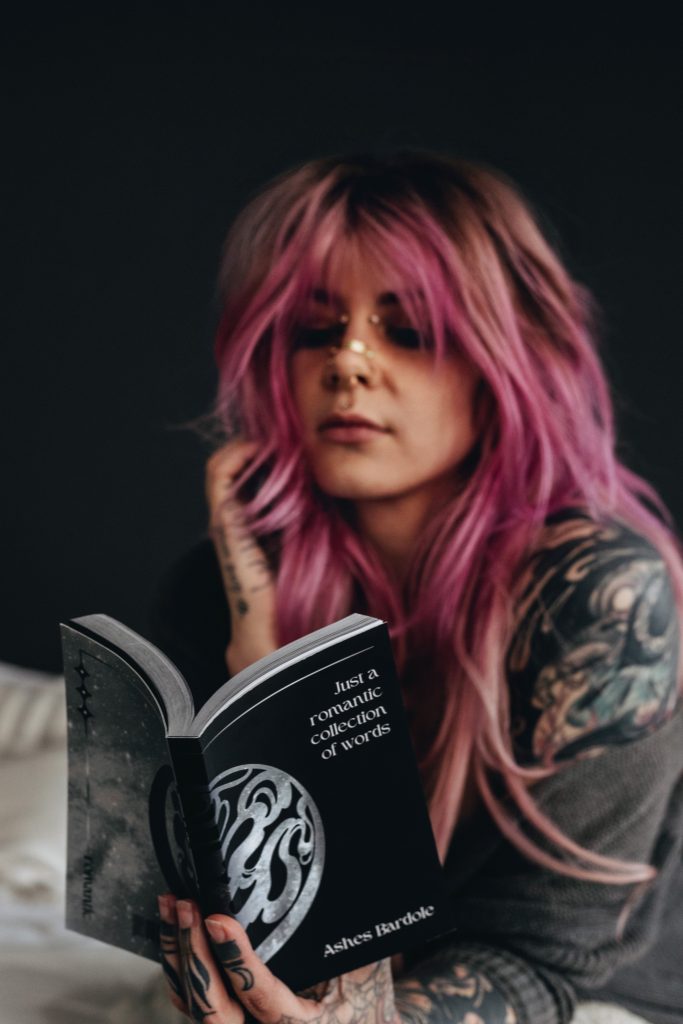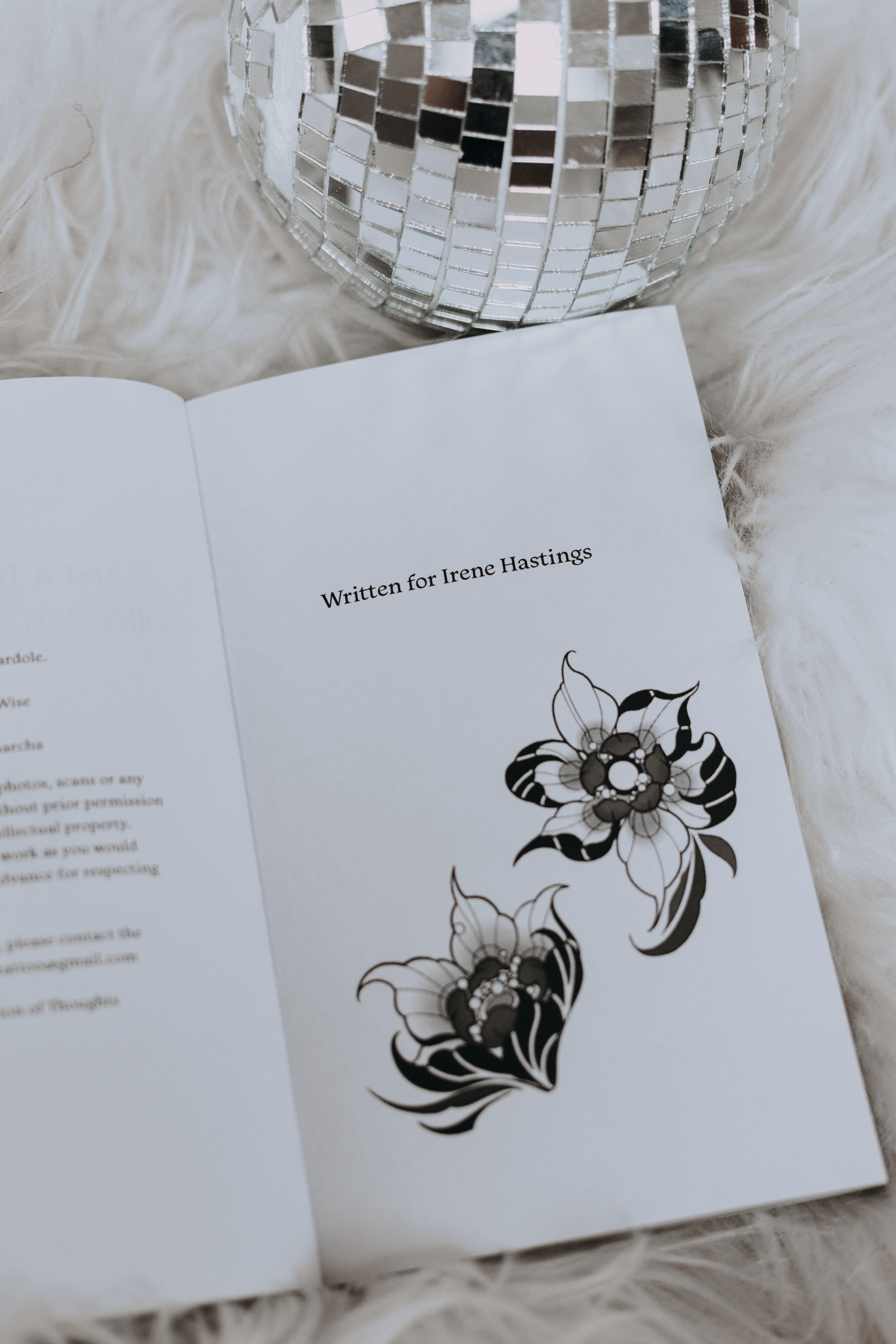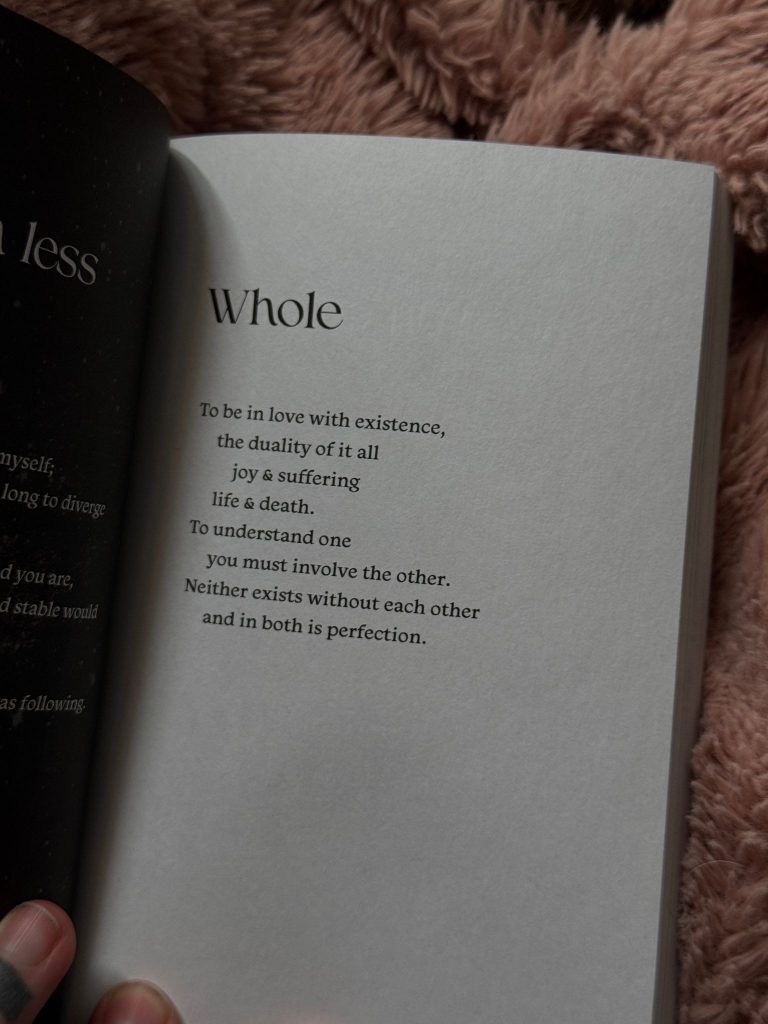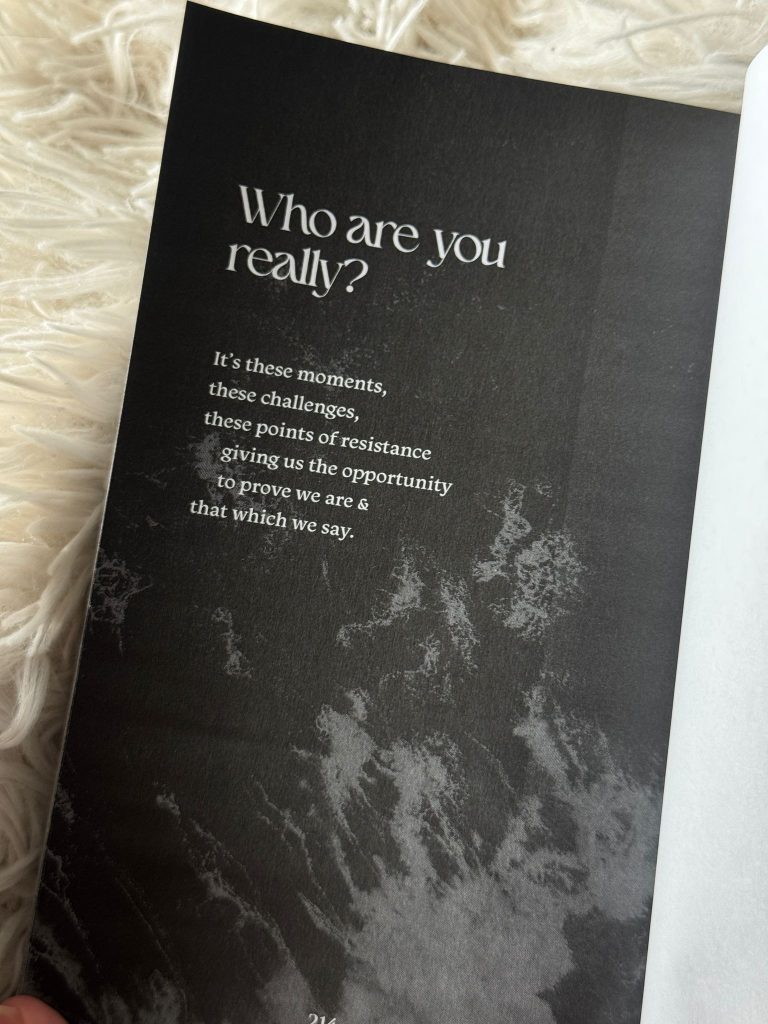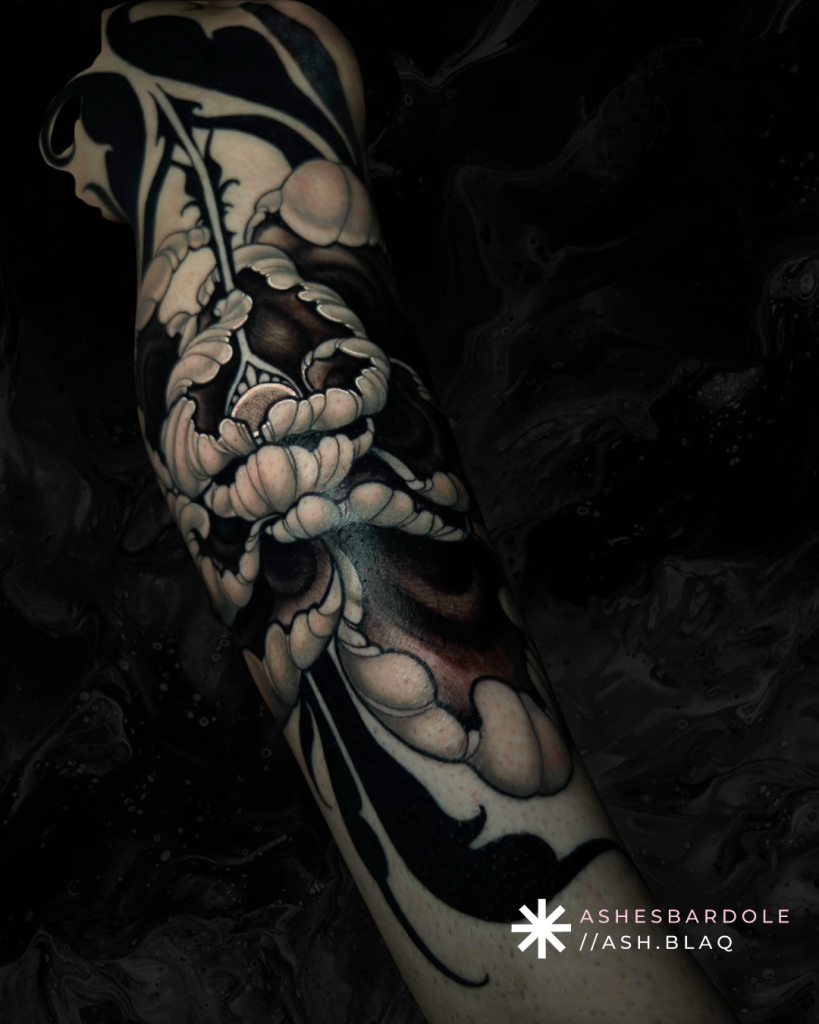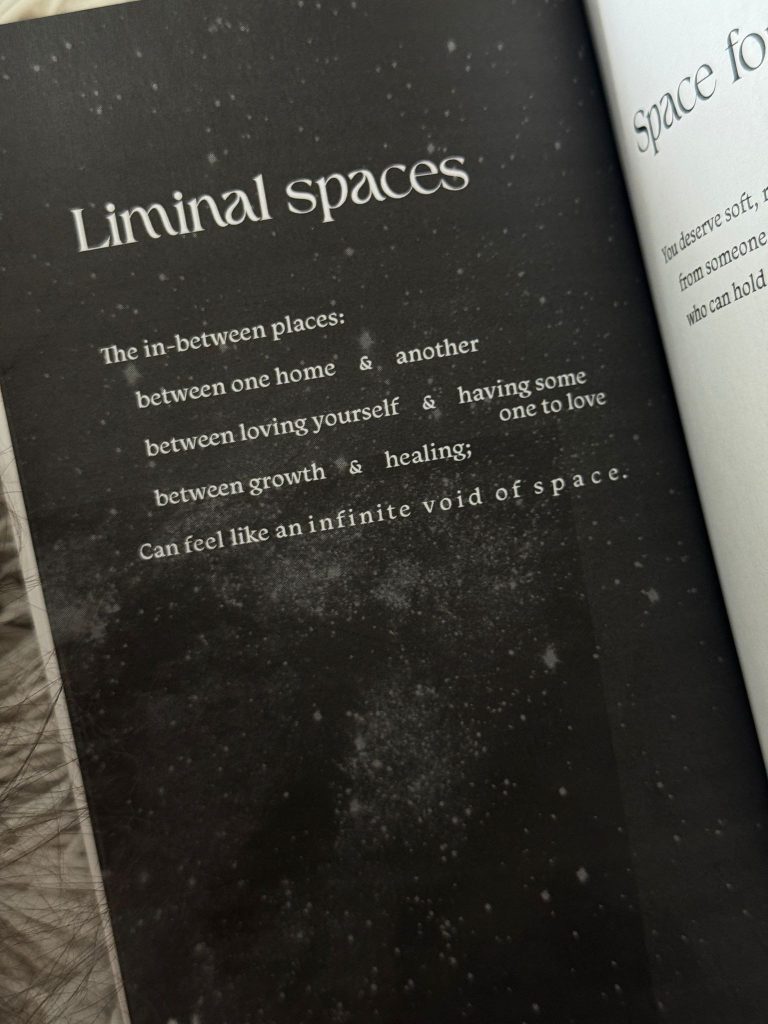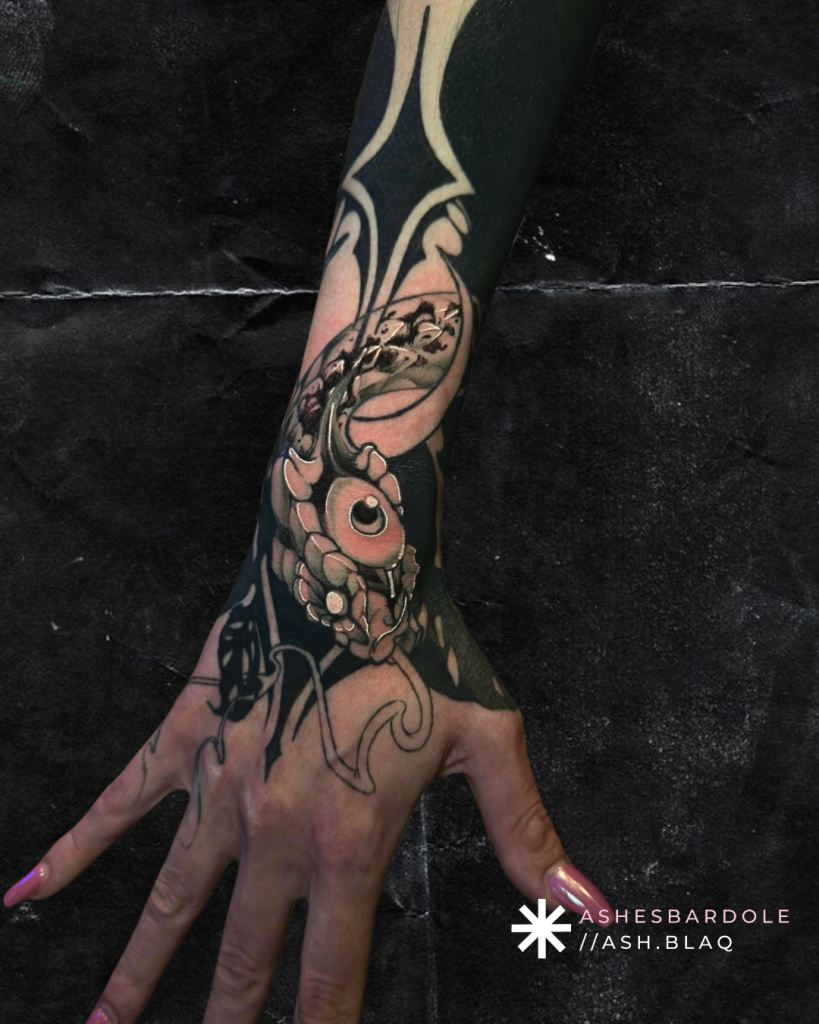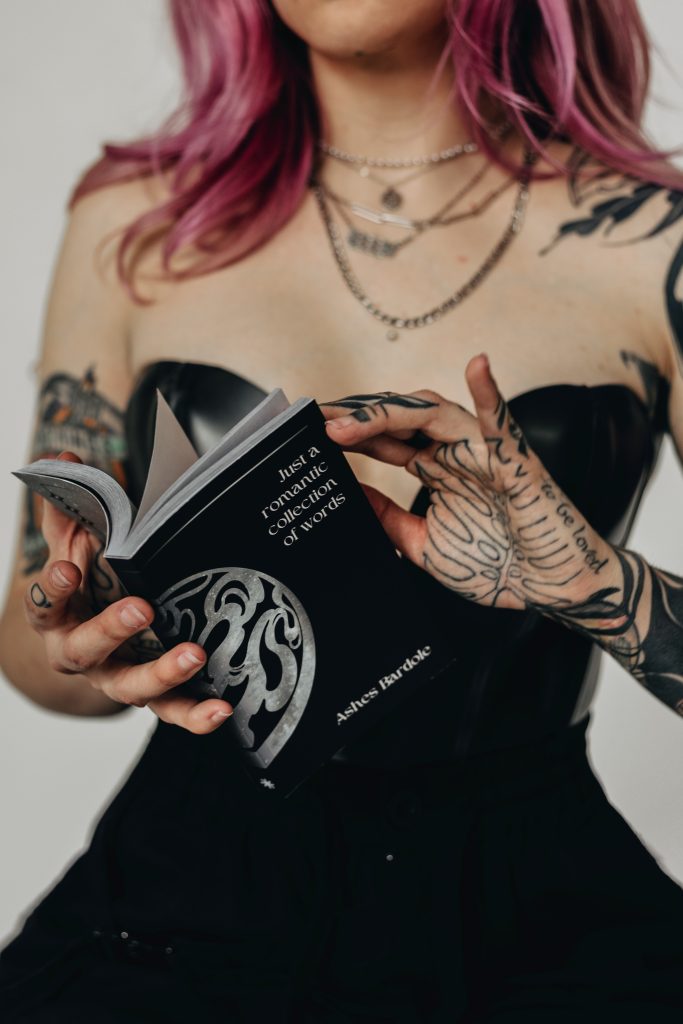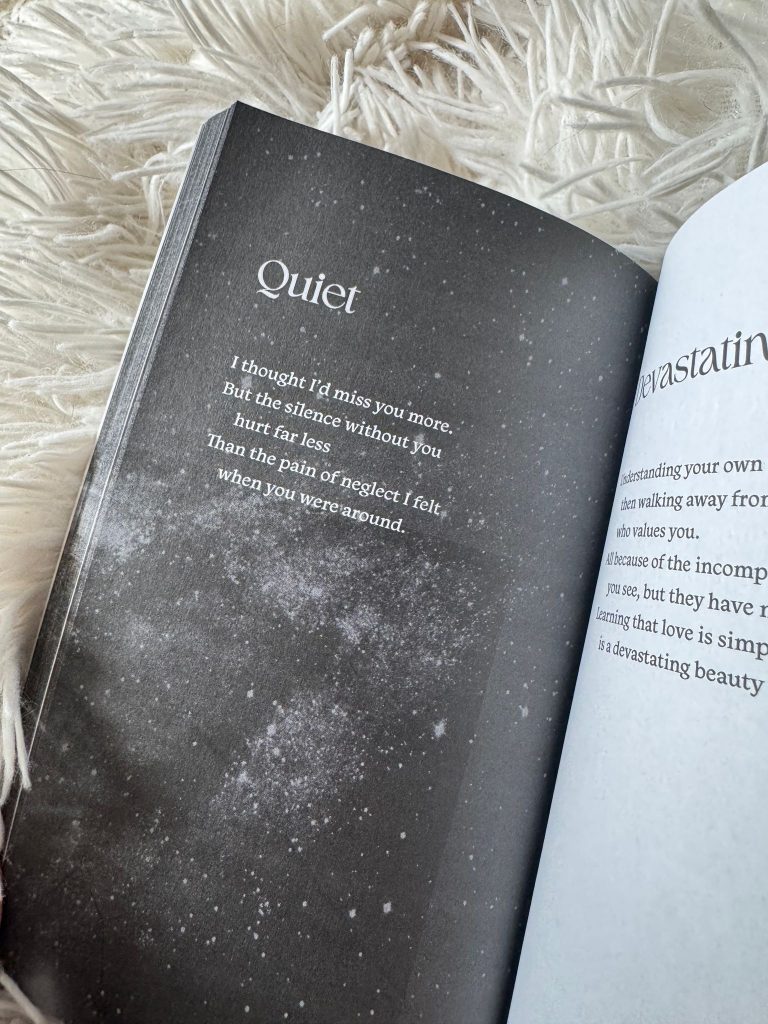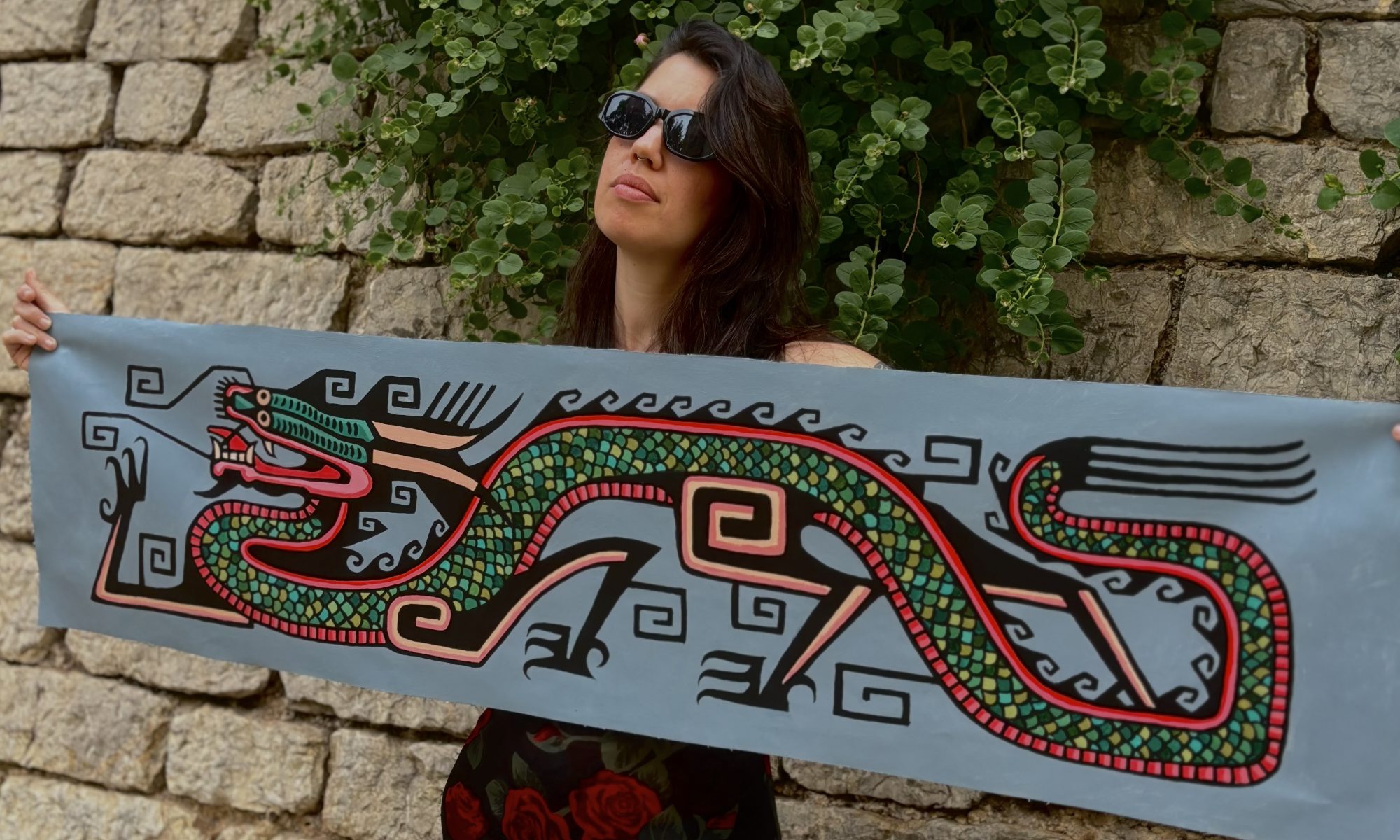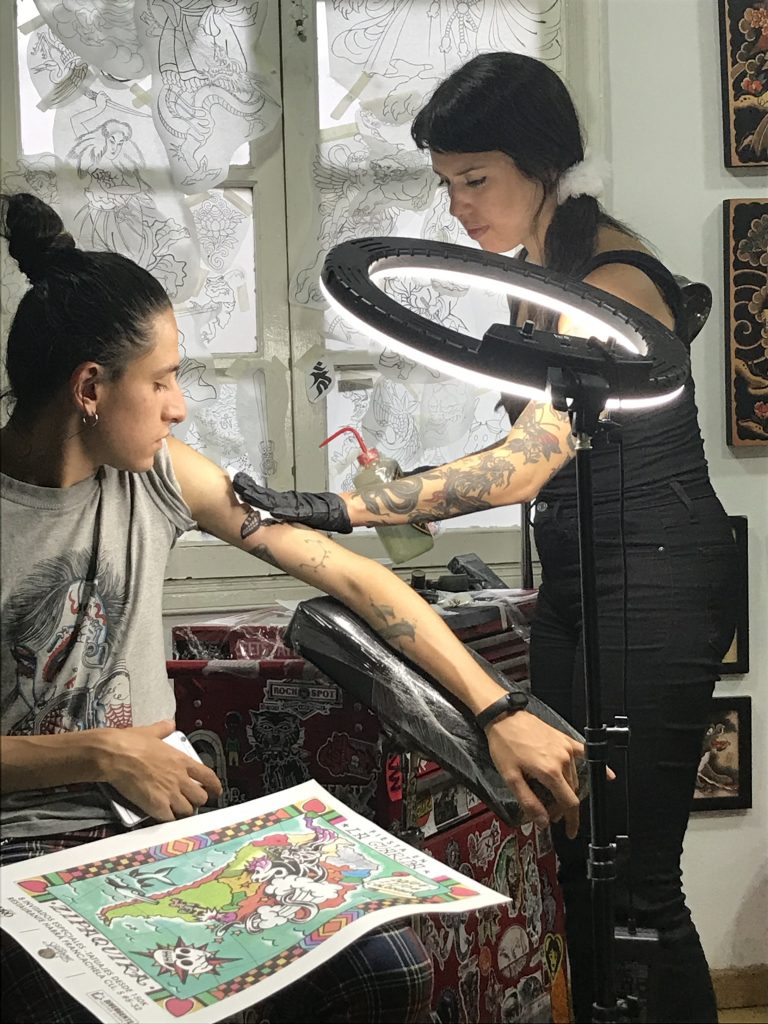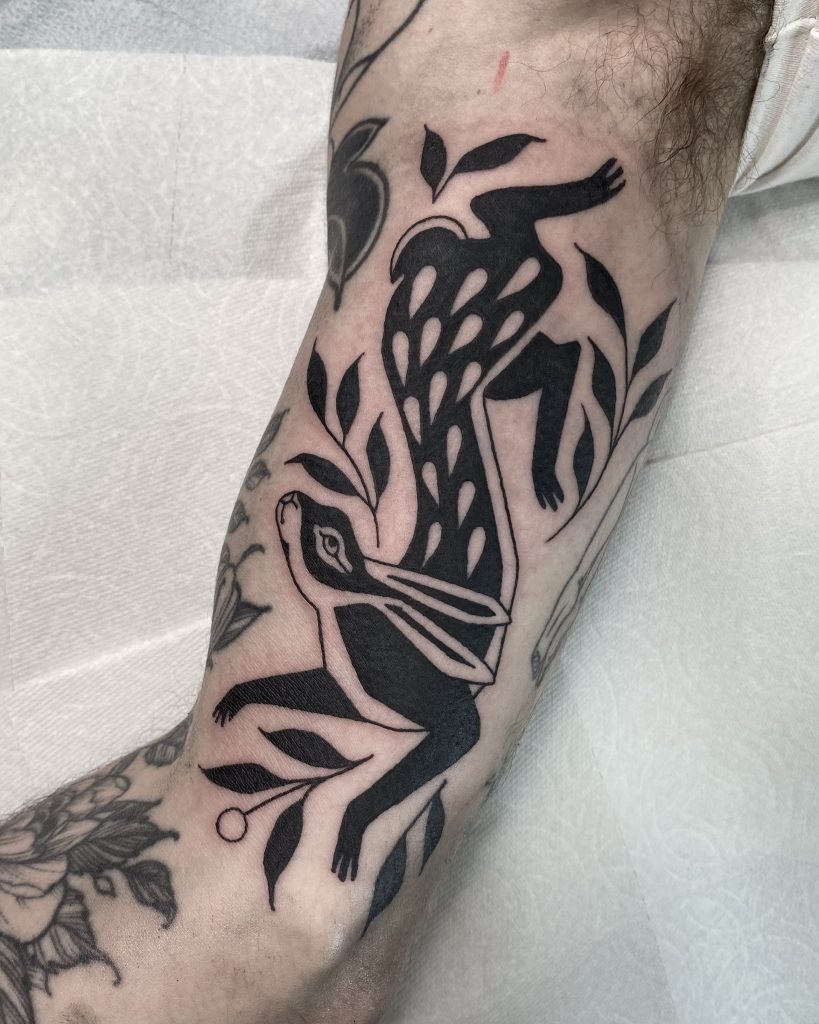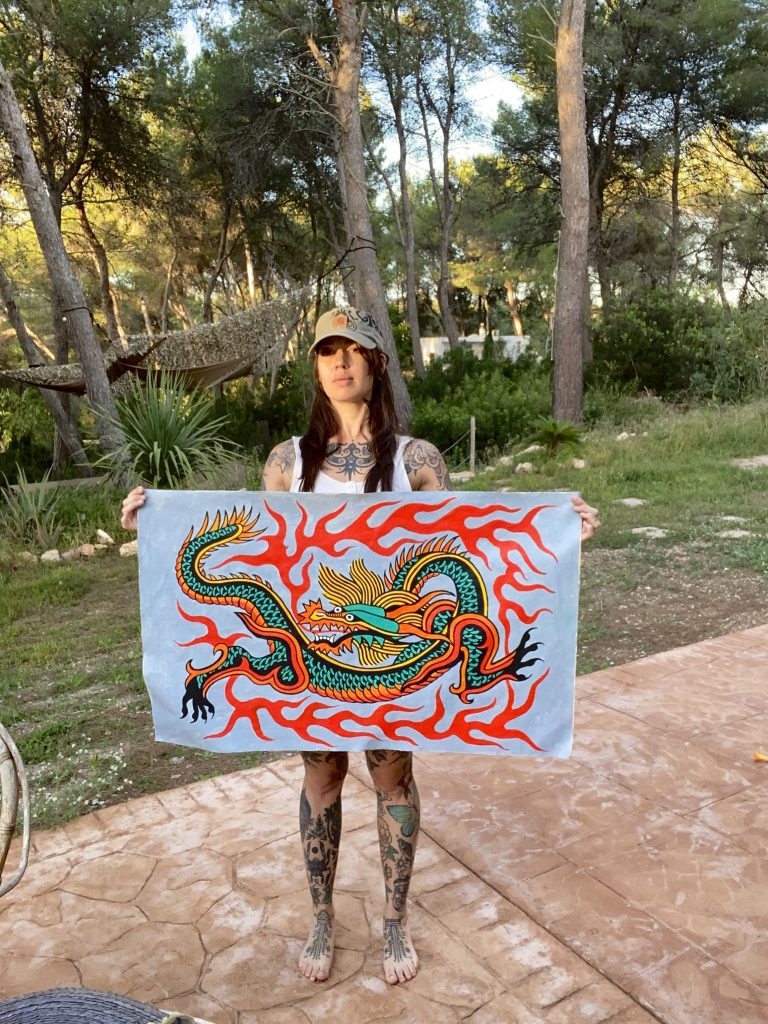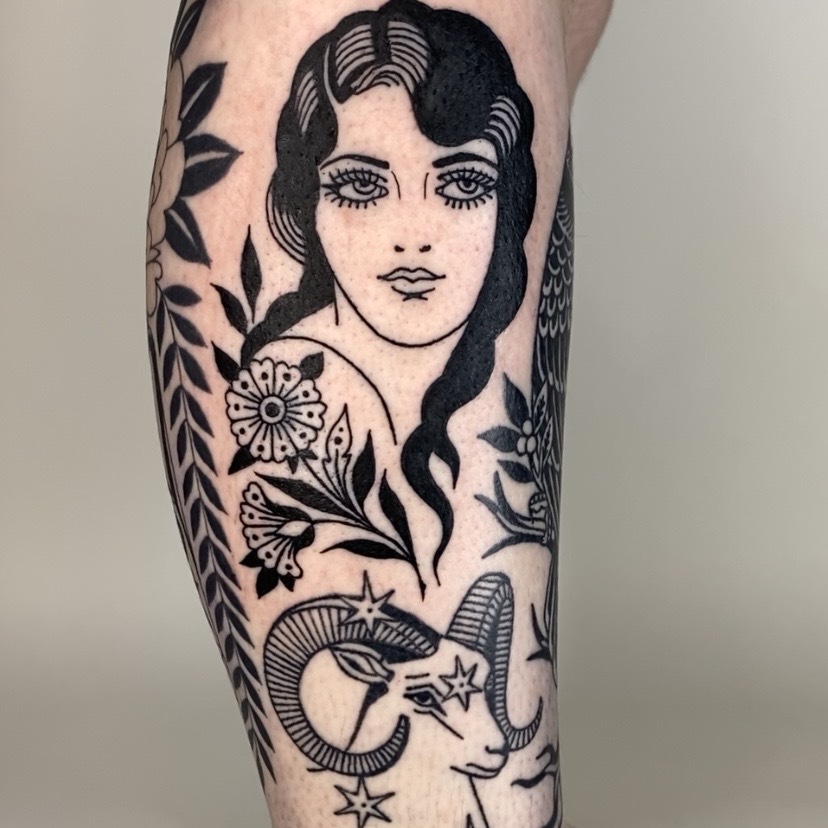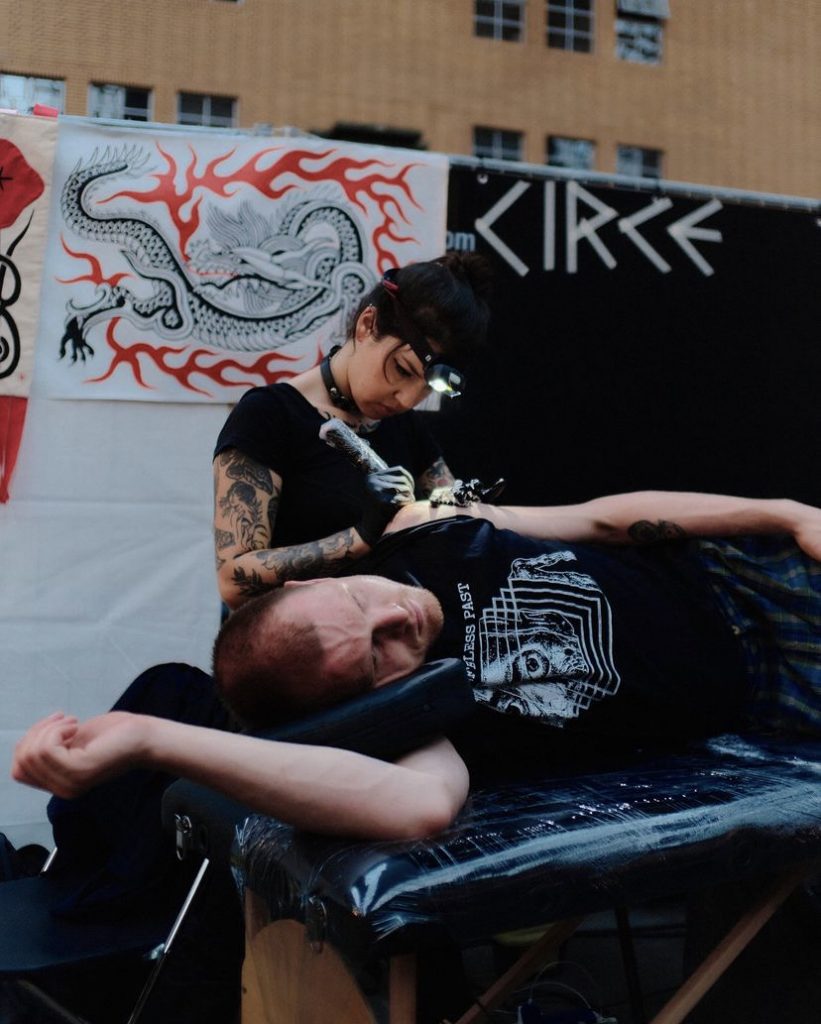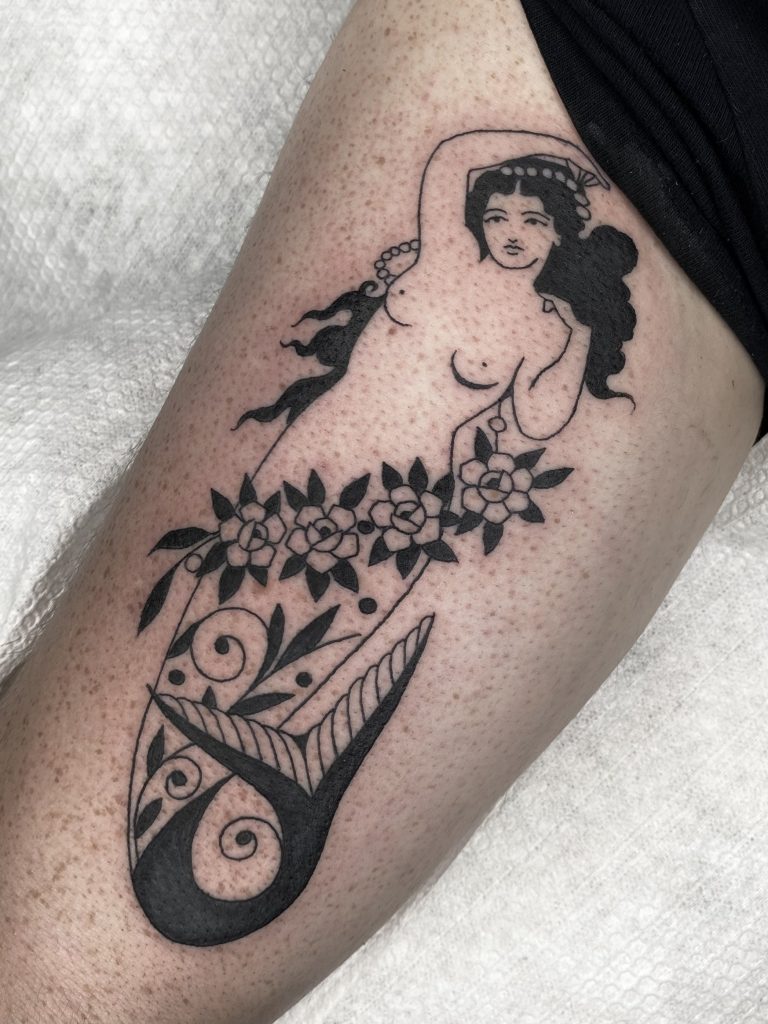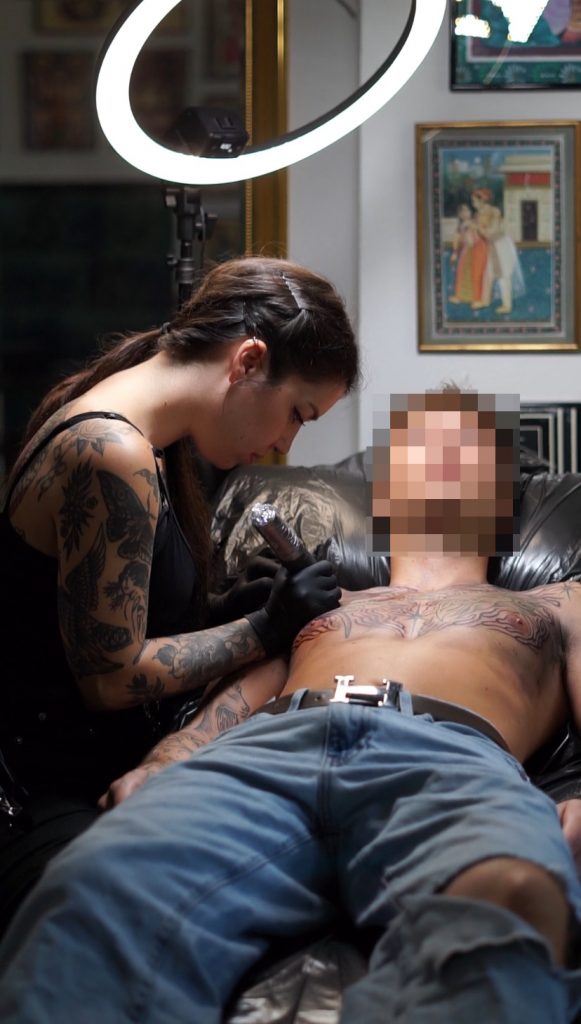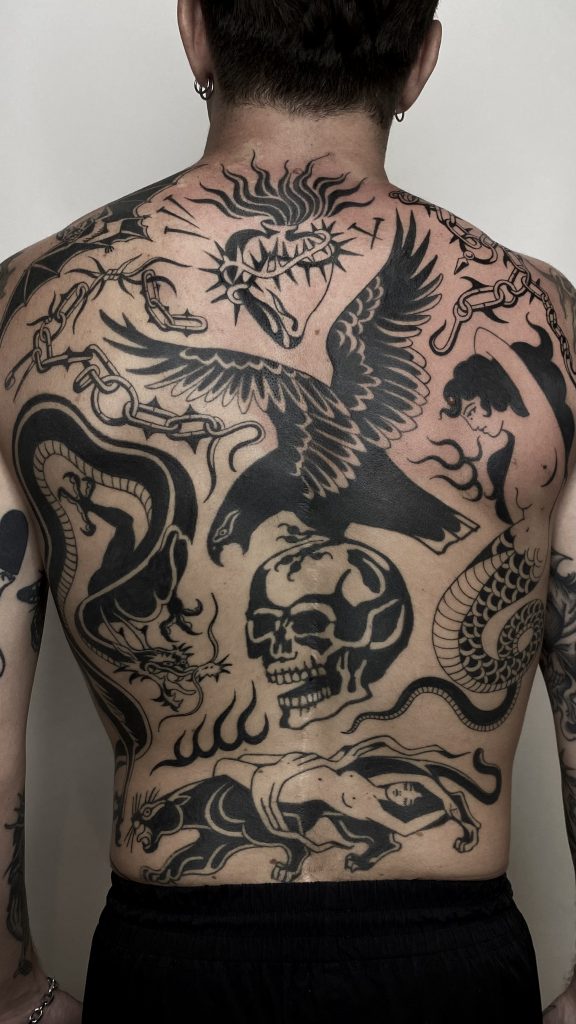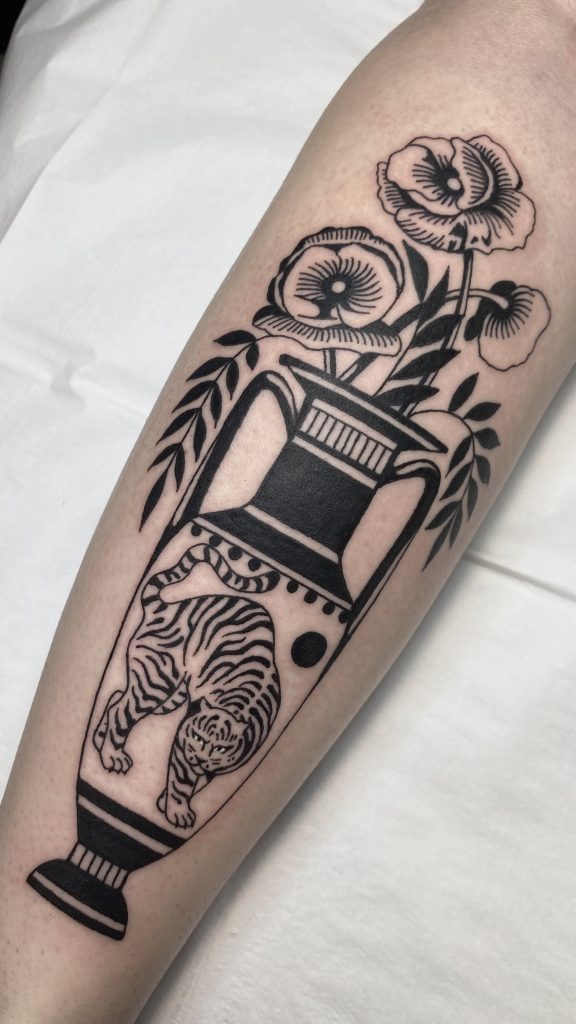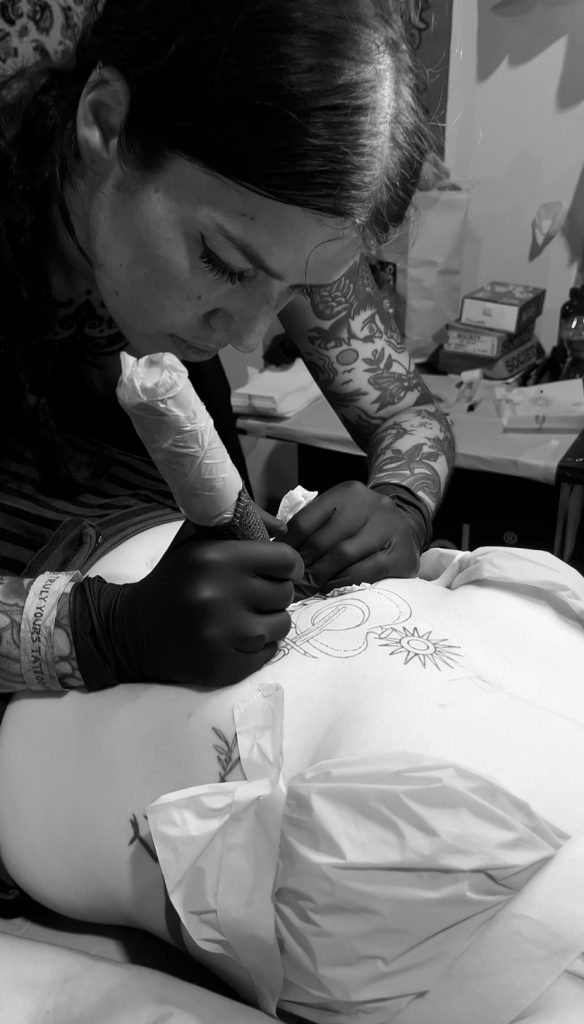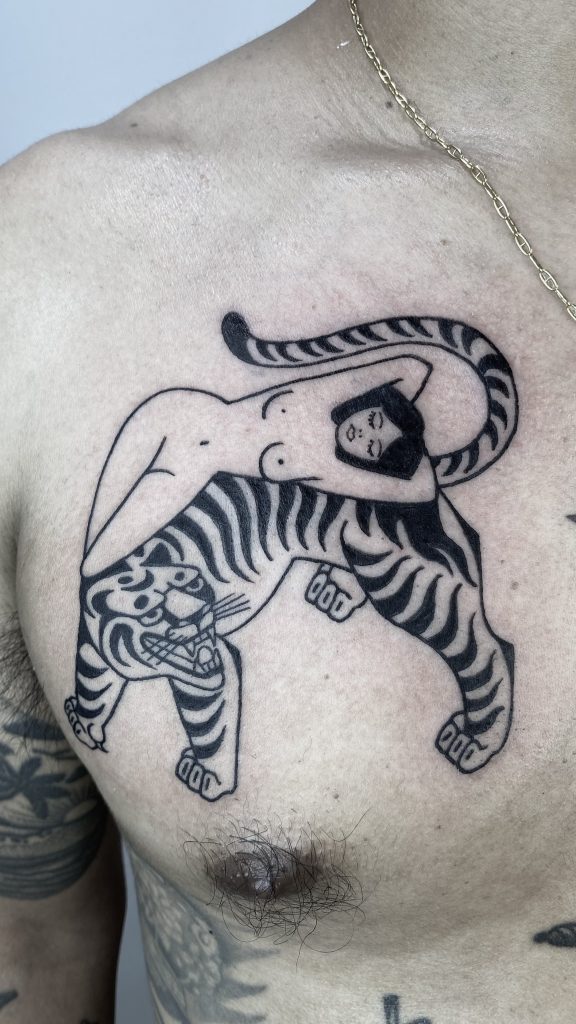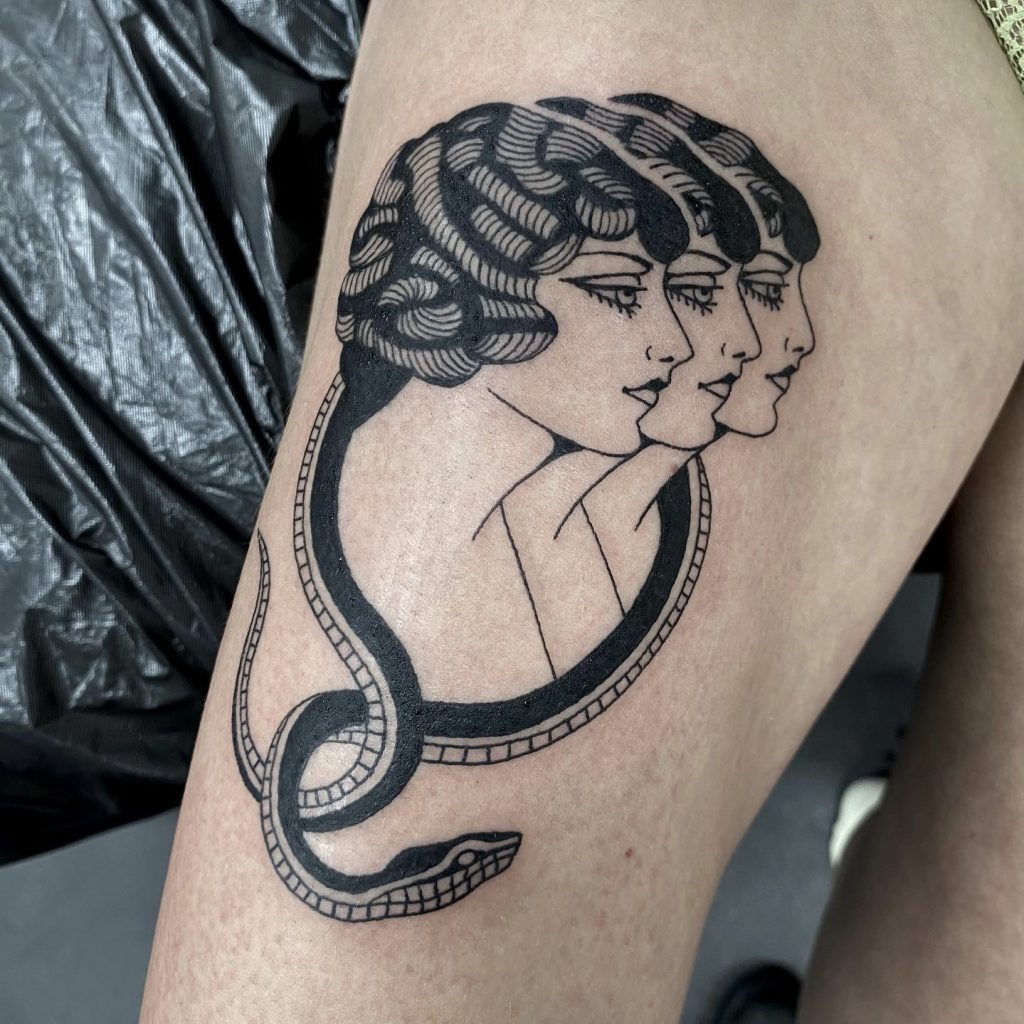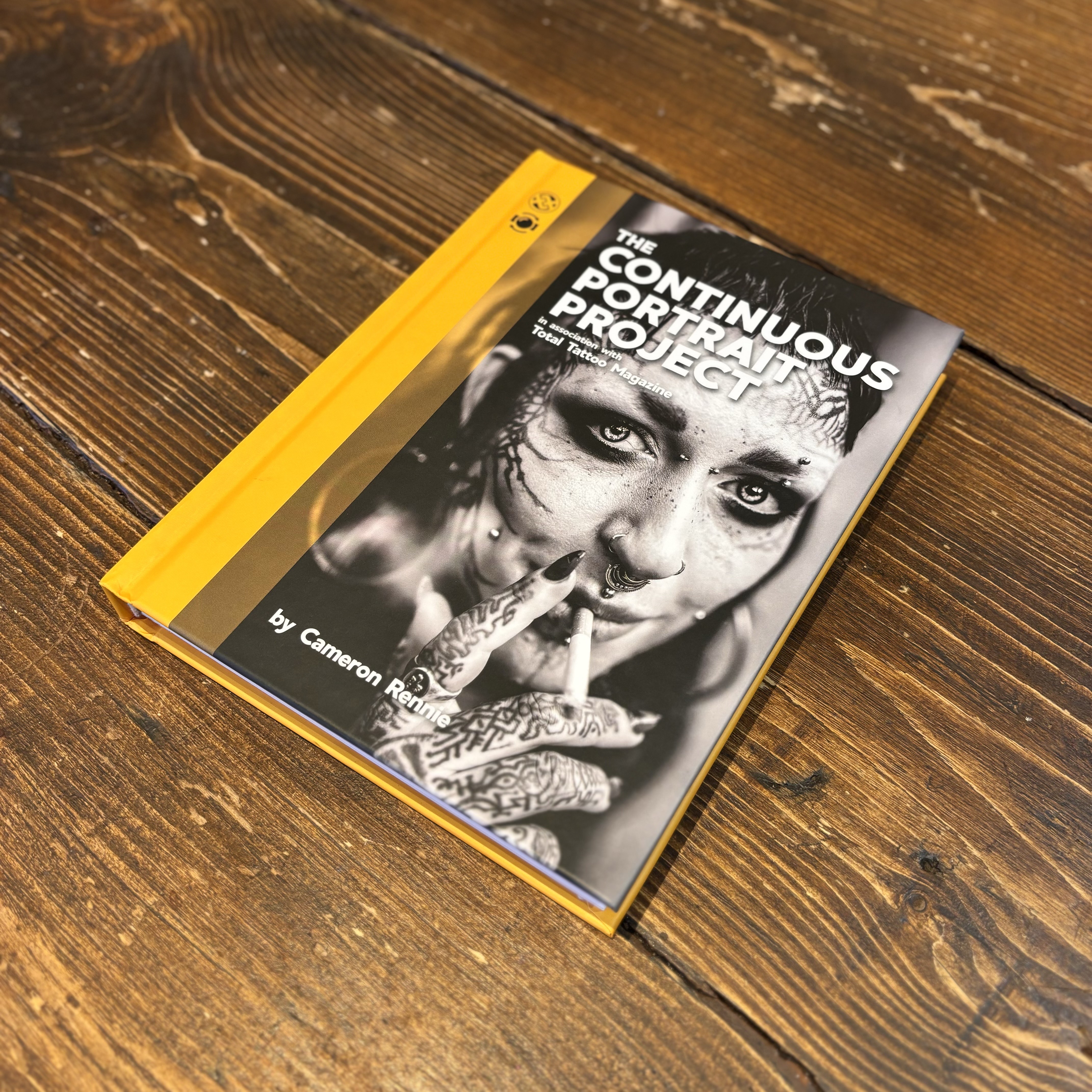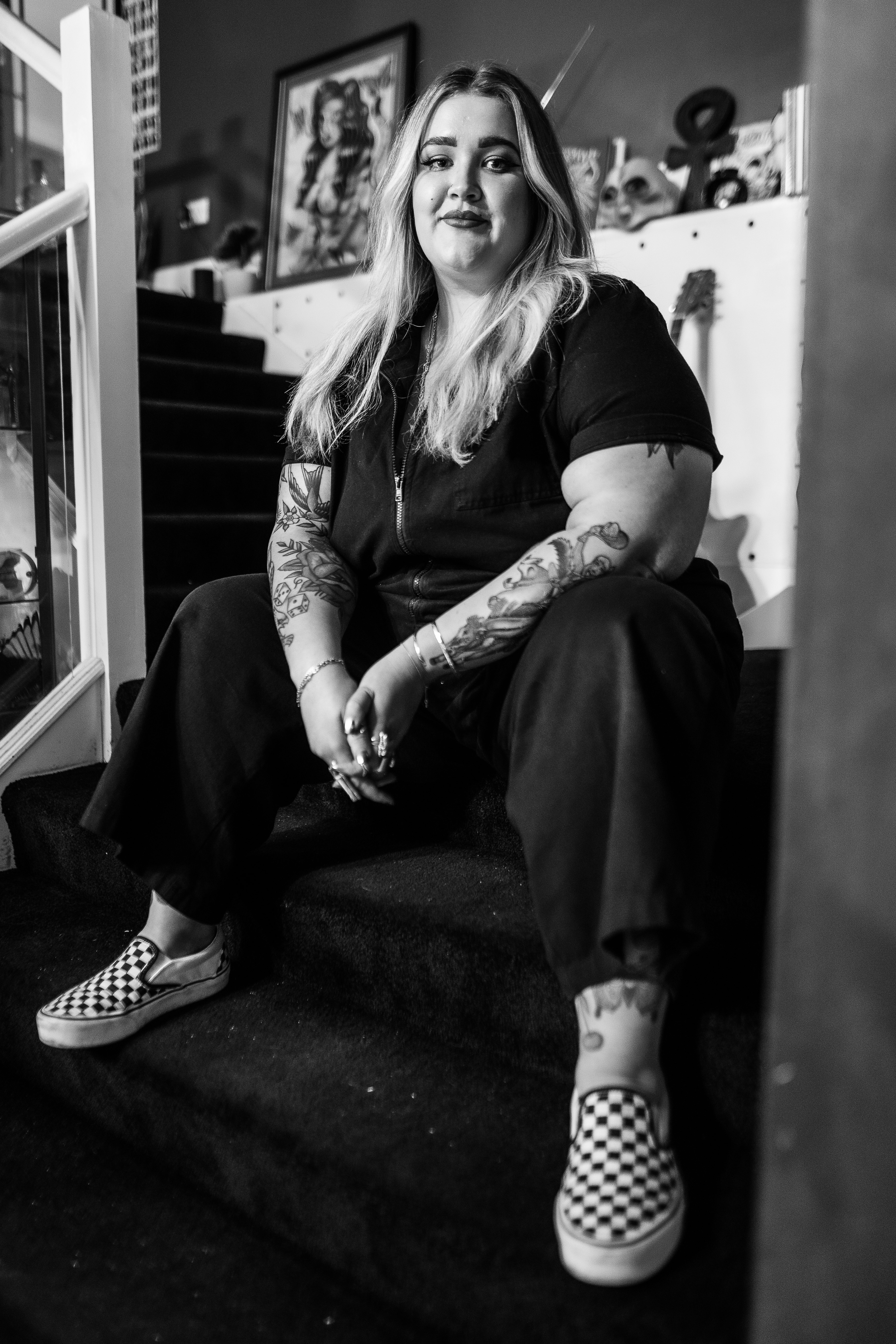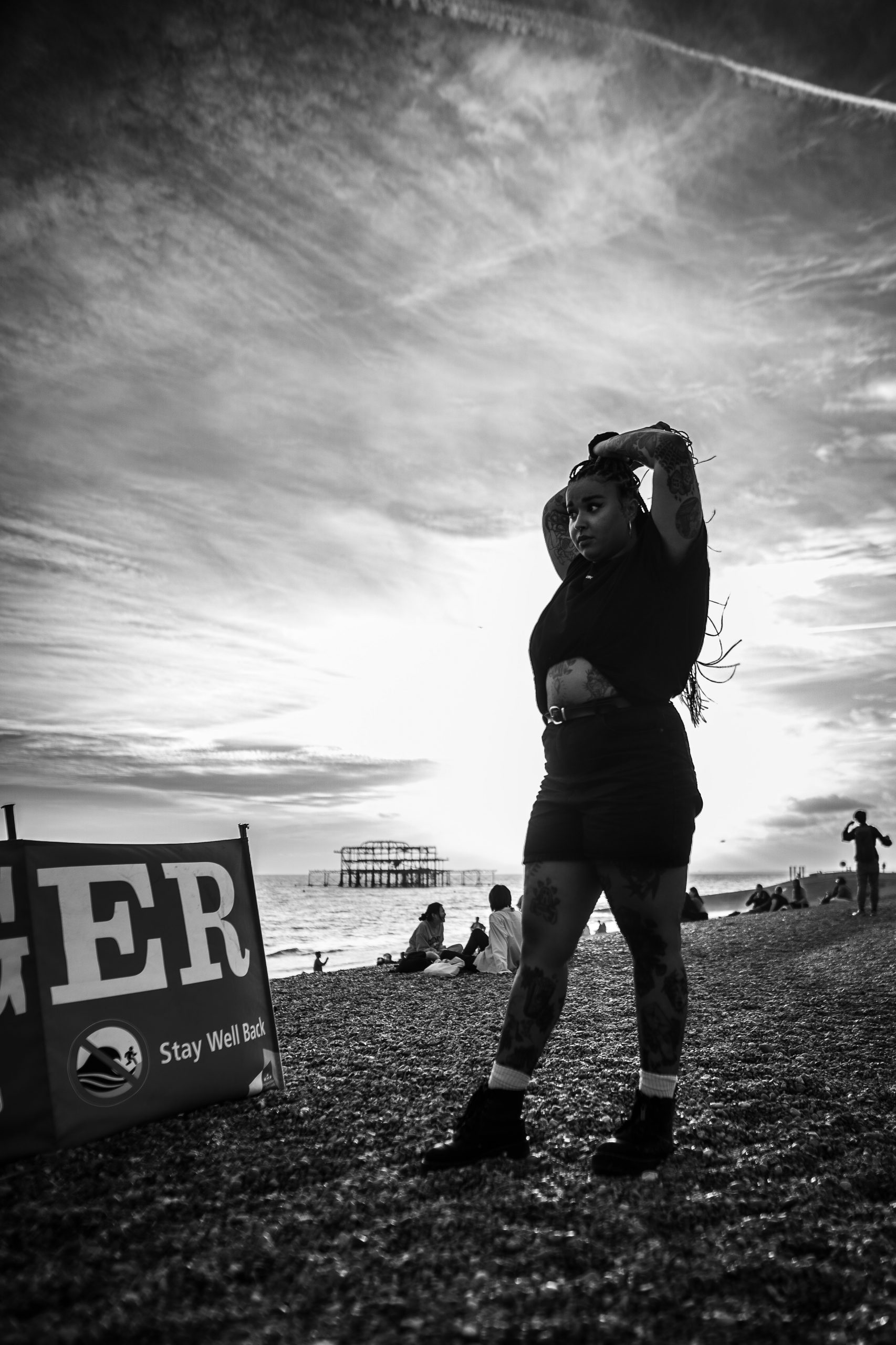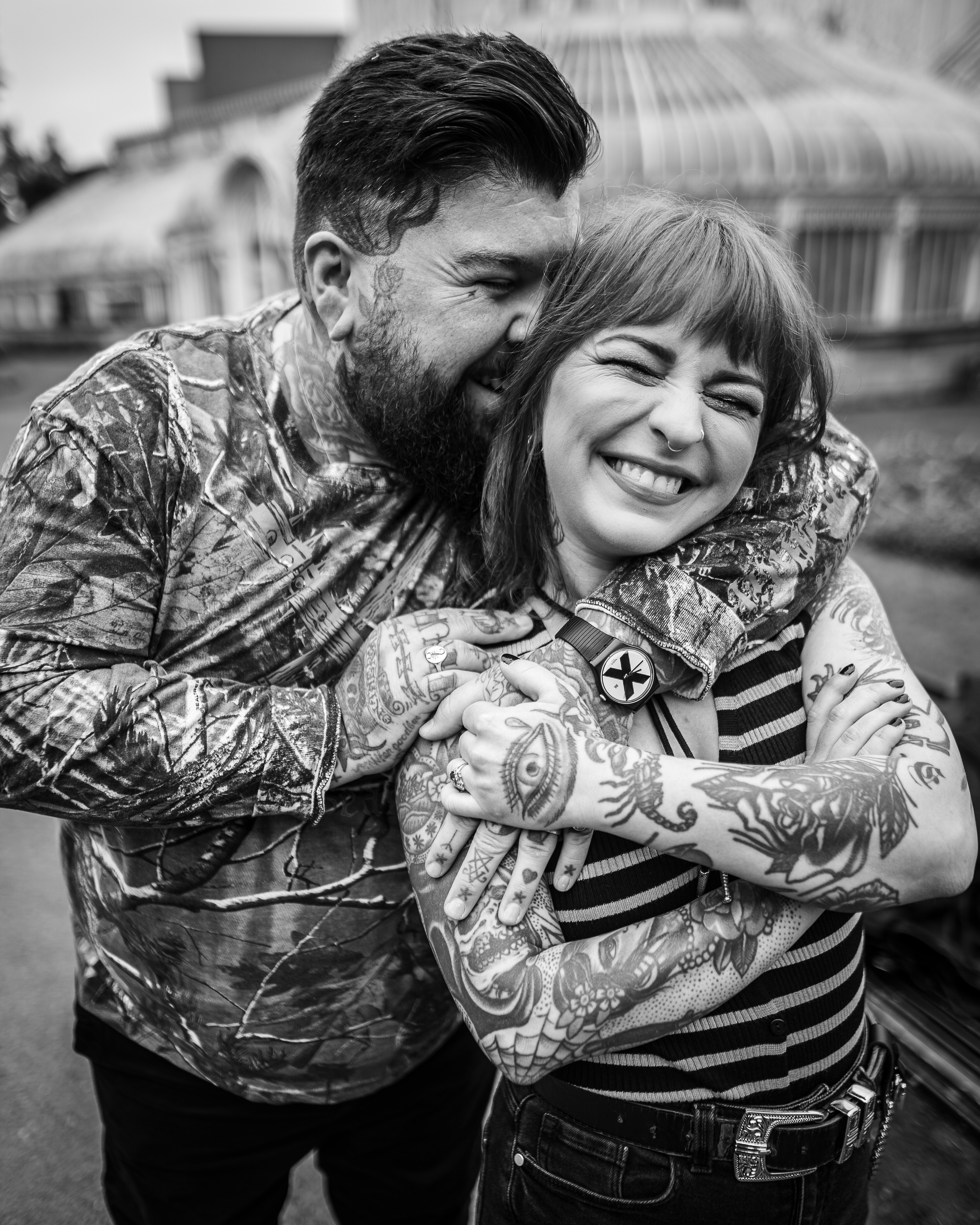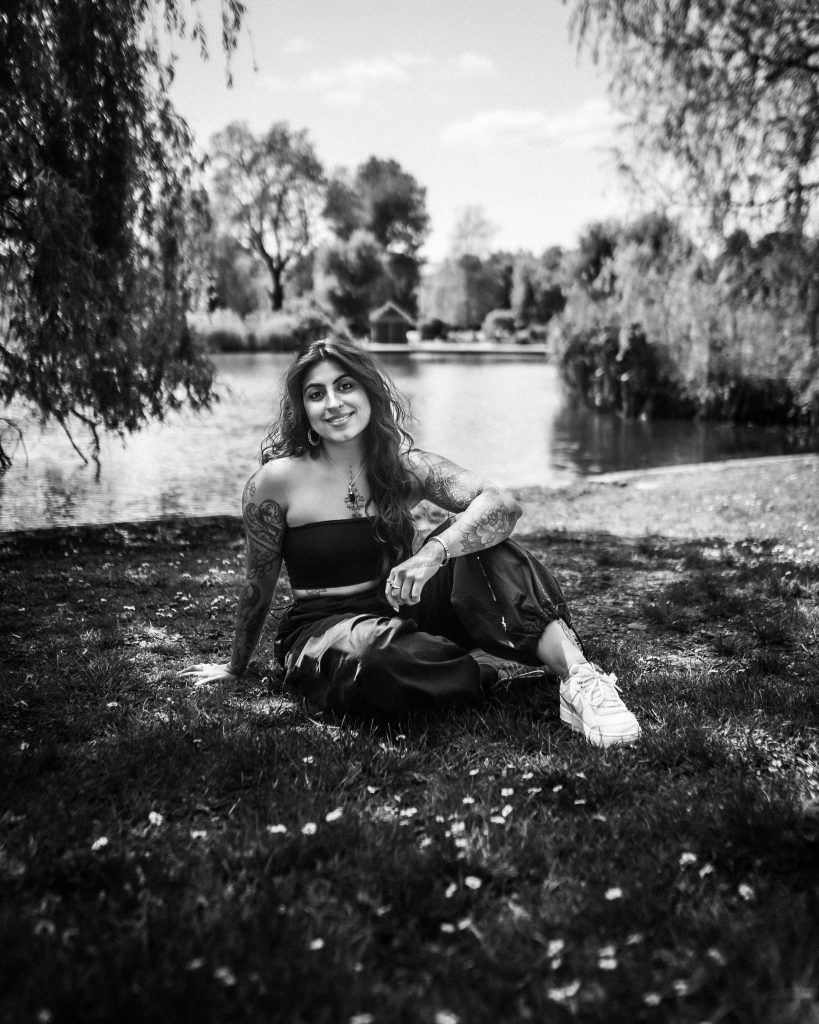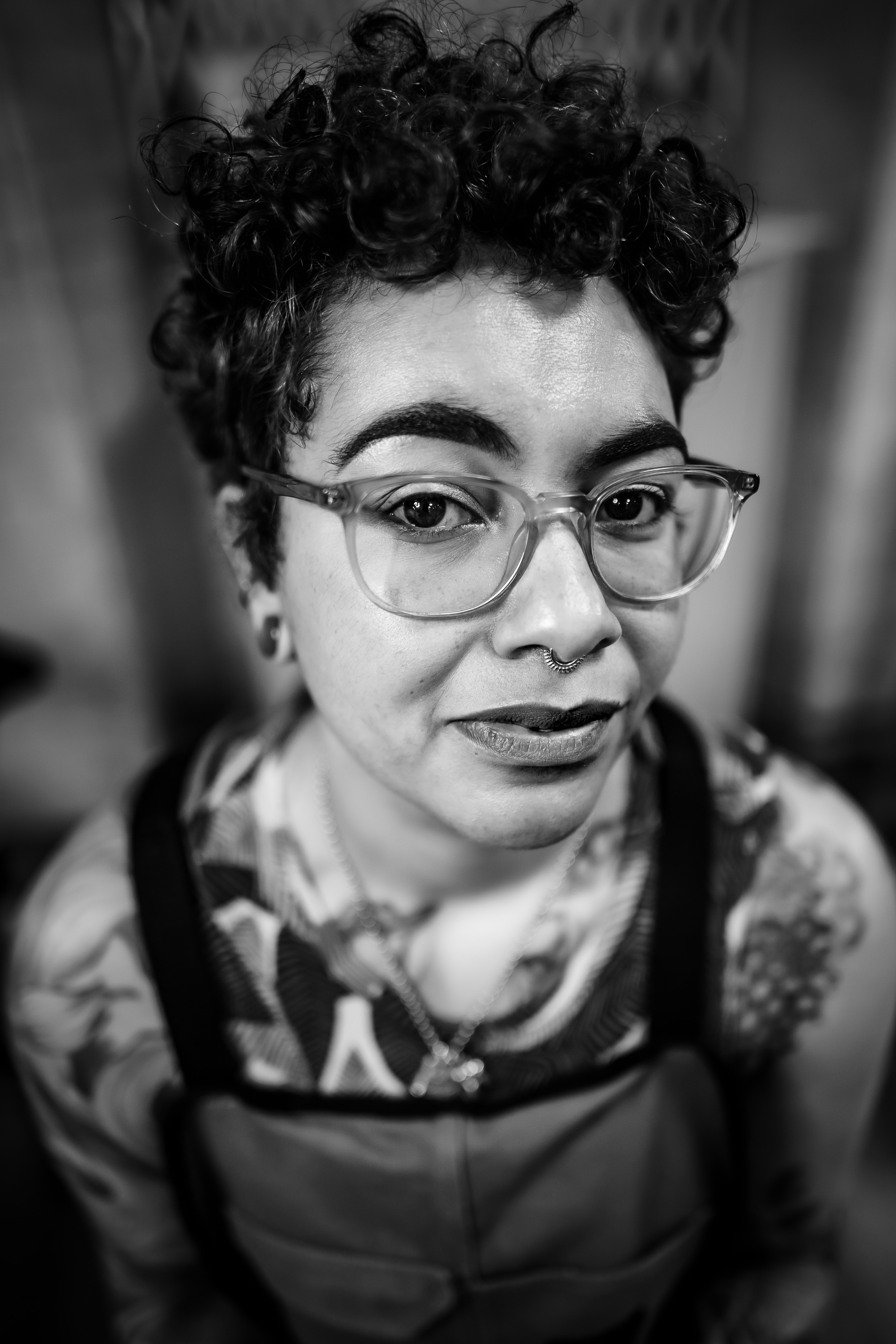The work of tattoo artist Swasthik Iyengar is a mix of Indian tribal and Hindu, but with a contemporary edge, that helps connect people to their roots. And we’re totally obsessed. Her Instagram feed – gunga_ma – is filled with bold and beautiful designs that clearly empower their wearers, so much so that she’s created a community of women who wear her tattoos.
She’s been immersed in the tattooing industry from her early twenties, starting out as a counter girl in a shop in Australia in 2015, she did her first tattoo at the end of 2017, and has been tattooing for nine years now. But tattooing is in her blood – her grandmother was a traditional handpoke tattooer in India.
She’s currently in the US, but we hope that she comes over to the UK soon, so we can join her community of badass women by adding a piece of her work to our own collections… We couldn’t wait to hear more about her journey. Settle in, it’s absolutely fascinating!
When did you first fall in love with tattoos? Was there a poignant moment from your past? Tell us about it, take us there…
I fell in love with tattoos from the moment I got tattooed when I was 20 in London. It was just so magical. Not only did I love my tattoos, but I fell in love with the experience and the energy and vibrant colours in the tattoo shops. For most of my teen life, I found it very hard to fit in, so when I moved to London and got my first tattoo at the world famous Into You [sadly now closed] owned by Alex Binnie, I just knew my journey of tattooing was not going to stop.
I remember seeing Hindu influenced imagery in the shop and I felt so at home, I felt a belonging. To see that there was a community of people out there that cherished Hindu imagery and gods made me feel comfortable in my skin – literally as my first ever tattoos were my family gods: Lord Narasimha and Lakshmi.
What was your childhood like, were you always artistic? Tell us about your family connection to tattooing…
I was born and raised in India till I was 10 years old. I came from a deep spiritual background. India is filled with rich art and colours – because of the people, the sounds, the temples and houses, people’s prayer rooms. I lived a simple life there with my parents and extended family. I remember going to sacred sites and temples on big road trips with family and cousins, playing with cows, playing on the streets, going into nature.
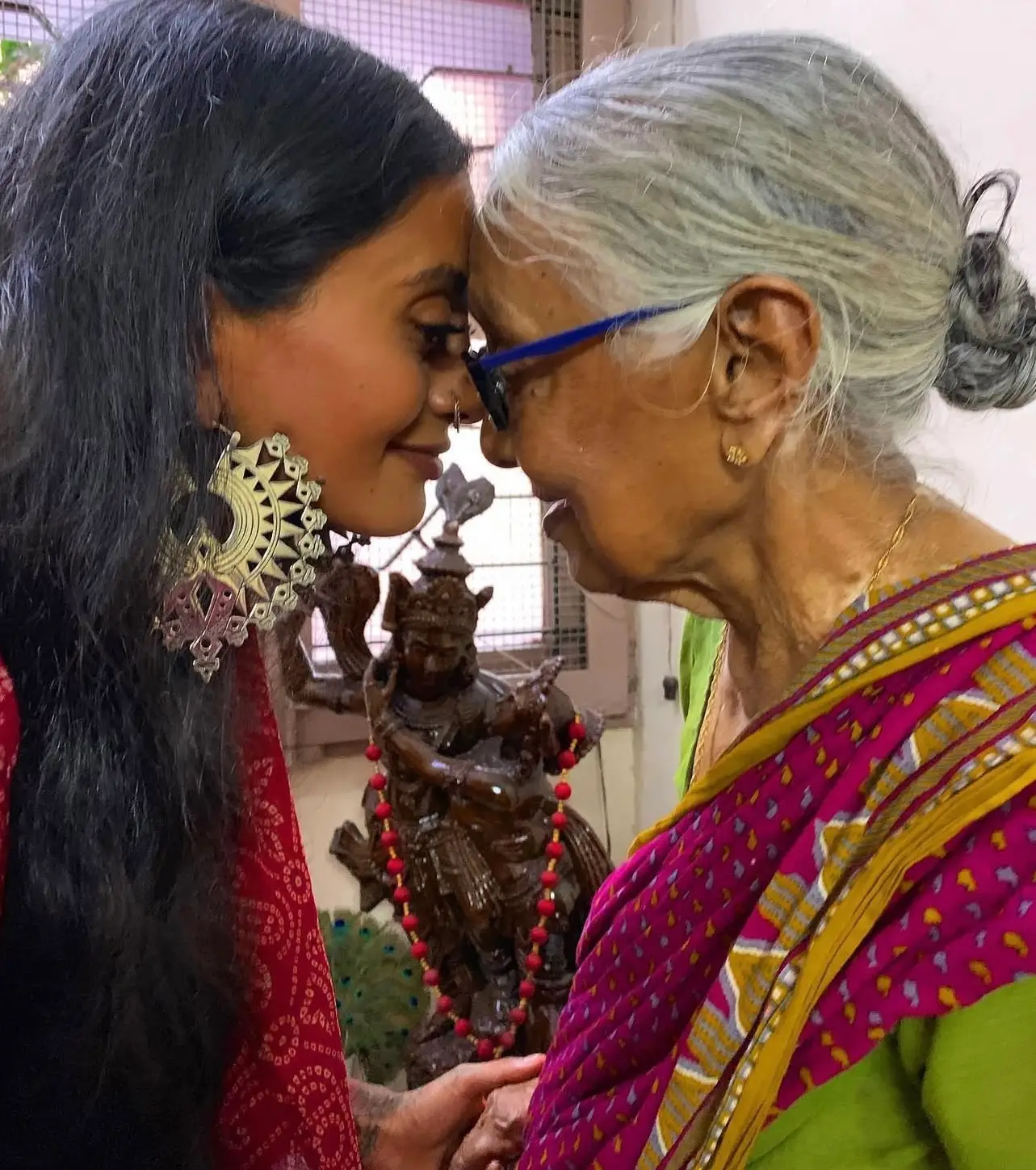
And my grandmother did stick-and-poke tattoos in Chennai in India. While this was not her sole job, she did kolam tattoos for reasons of healing as these specific tattoos have medicinal healing connotations based on deeply rooted traditions. To put into context, I can explain a little about the tattoos she did.
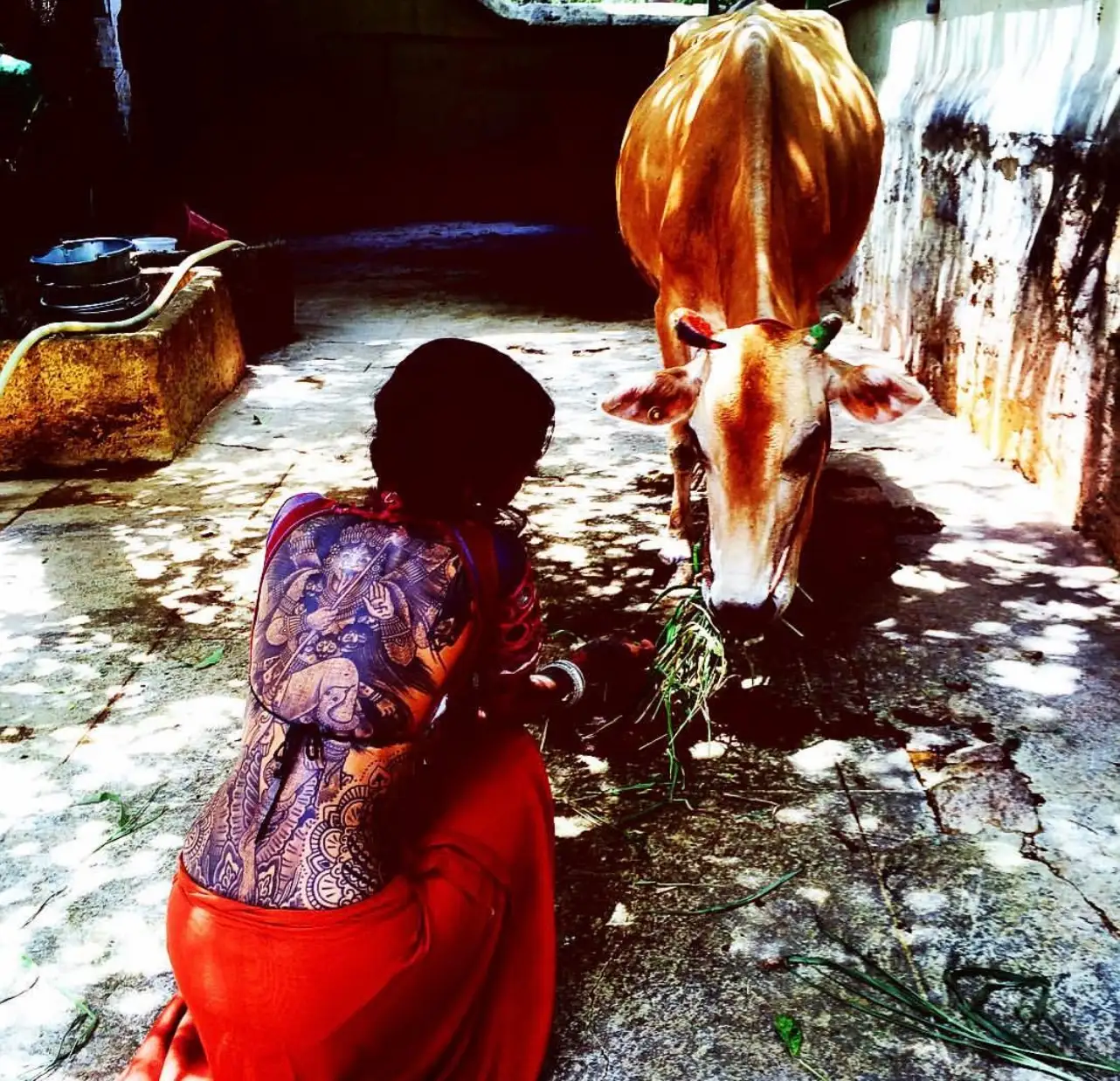
Kolam tattoos are extremely sacred. It is important to define first what is kolam. Kolam patterns are planetary based geometric/mathematical line drawings physically drawn on the ground (earth mother) with rice flour or grounded natural seeds. Each kolam is formulated around a matrix of dots, whereby folklore mandates that all lines must be connected to symbolically prevent evil spirits from entering inside the land/village, hut/home, territory or temple where the kolam pattern exists.
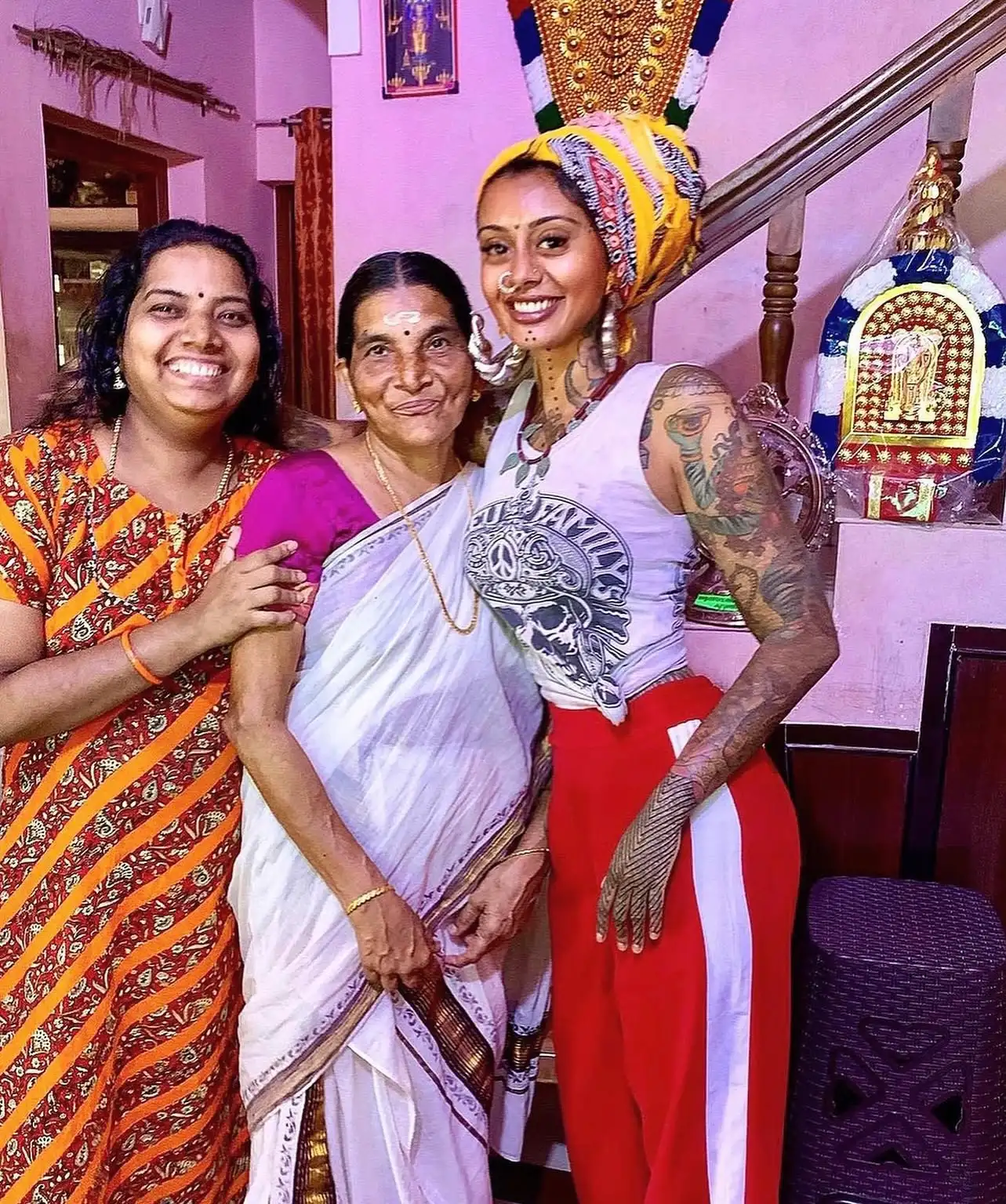
Why did South Indian people like your grandmother historically tattoo kolam patterns on the skin?
Kolam patterns were tattooed (by sacred stick-and-poke instruments called Mungurah) on people’s skin by female tattooers and or medicine healers to protect family members from evil spirits and disease from entering the body. Evil spirits included the lost souls of those that died and could not find karmic closure and diseases included cancers and many others that caused pain and stress on the body.
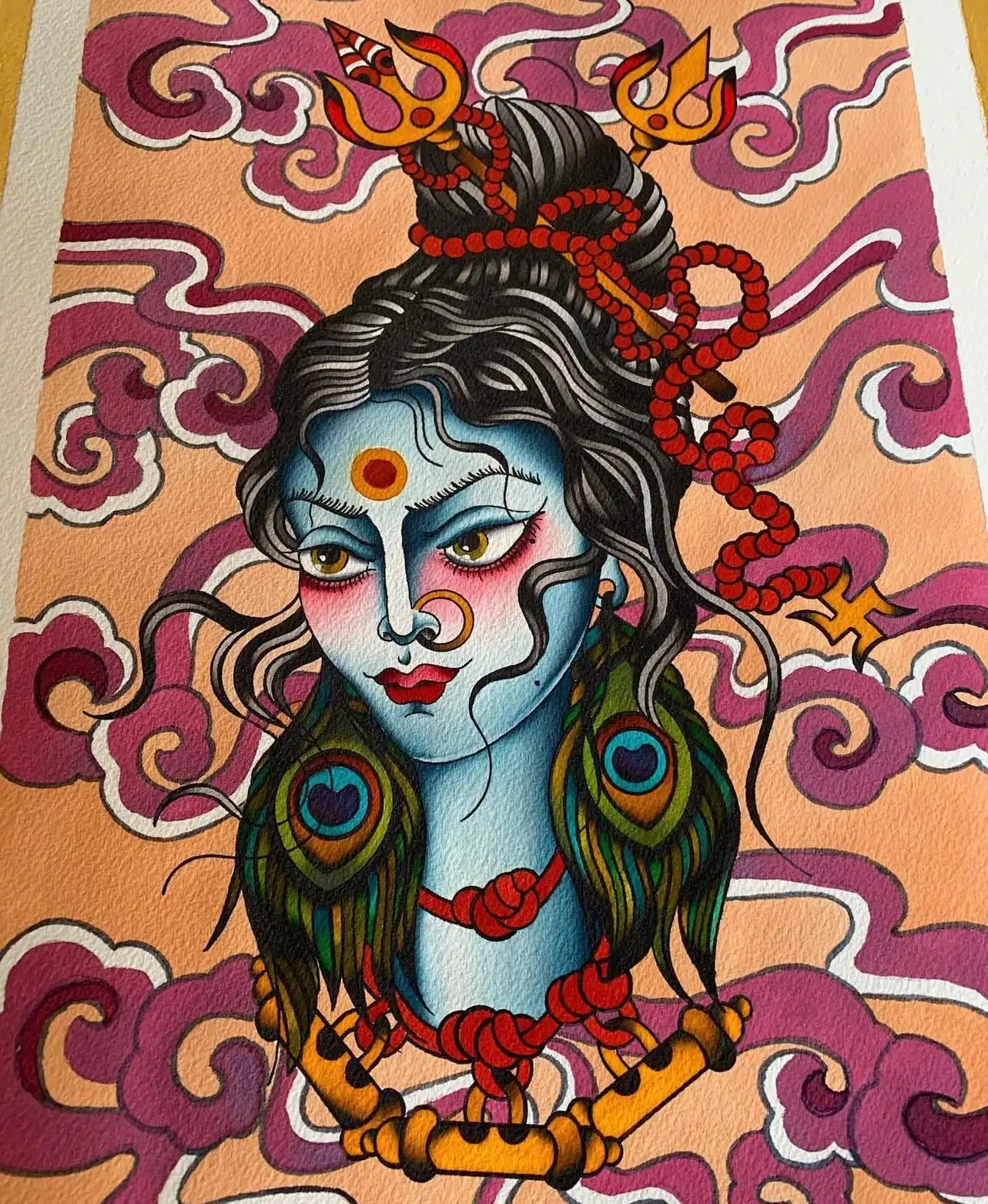
The reason that only ladies and medicine healers were allowed to tattoo this is because it was said that since ladies were mothers, they had the magic touch of empathy and love that surpassed the control of any evil spirit. Medicine healers were trusted to tattoo kolam patterns as their hands held the power to cure illness. The stick-and-poke instruments were made of many different materials but the special ones used in ritual were made of brass.
Your work has Indian tribal tattoo culture and Hindu imagery infused in it, but with a contemporary edge. How did your style evolve to become what it is today? Is it important to embrace both past and present?
Not only as a student but as a person who holds space and has an extreme amount of respect for the craft, it is very important to study and acknowledge the tattooers and the tattoo practice in the past. These people have paved the way for tattooers today. Since I have a strong connection to my motherland – India, even before I was tattooing and I was painting – I was always inspired by references/motifs/imagery linked to Hindu culture and traditions/stories in different parts of India. For such a small country, India has an extensive and diverse array of painting, arts and crafts as well as tattoo practices.
Through studying these different styles and mediums of art and tattoos, and continuing to do so, I tried to and I am trying to take reference from such practices (use them as tools so to speak) and draw from my heart and mind. That is how I formed and continue to form my style of work. It is important for me to keep evolving, learning and tweaking my skills both in tattooing and art so that I continue to grow. I also like the challenges it brings, because it pushes me to think outside of the box and to always try my best. By embracing the past, I hope to connect my clients to their roots, to our ancestors, to the spirit that forms us and connects us to our people, our land.
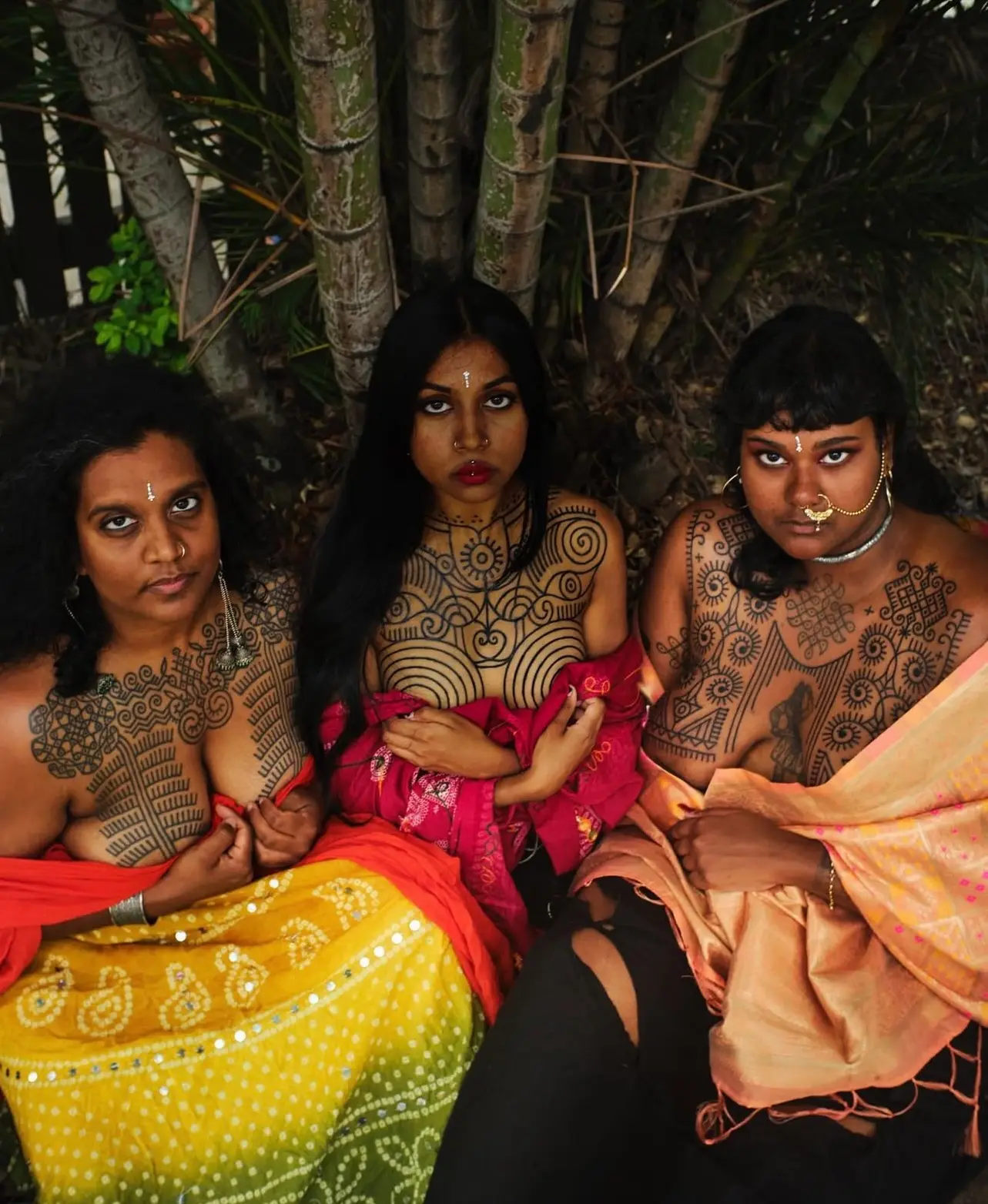
Your Instagram feed is filled with the most beautiful photos of women with bold designs that sprawl across their bodies, do you find the process of tattooing someone empowering – for them and for you? Do you notice people’s attitudes towards their own bodies change during and after the process?
Thank you so much for your kind words. Honestly the best part of tattooing is hearing my clients’ stories and making them smile through body transformation. In most of the situations, both my client and I have cried with happiness after the execution of the tattoo. In beautiful ways the universe has given us signs when the tattoo is finished, which makes us feels their ancestors (Pattis – grandmothers) were in a sense there with us. Tattooing is painful, especially in those sacred parts of the body, so it’s so empowering to see my client’s strength to endure, to get through it.
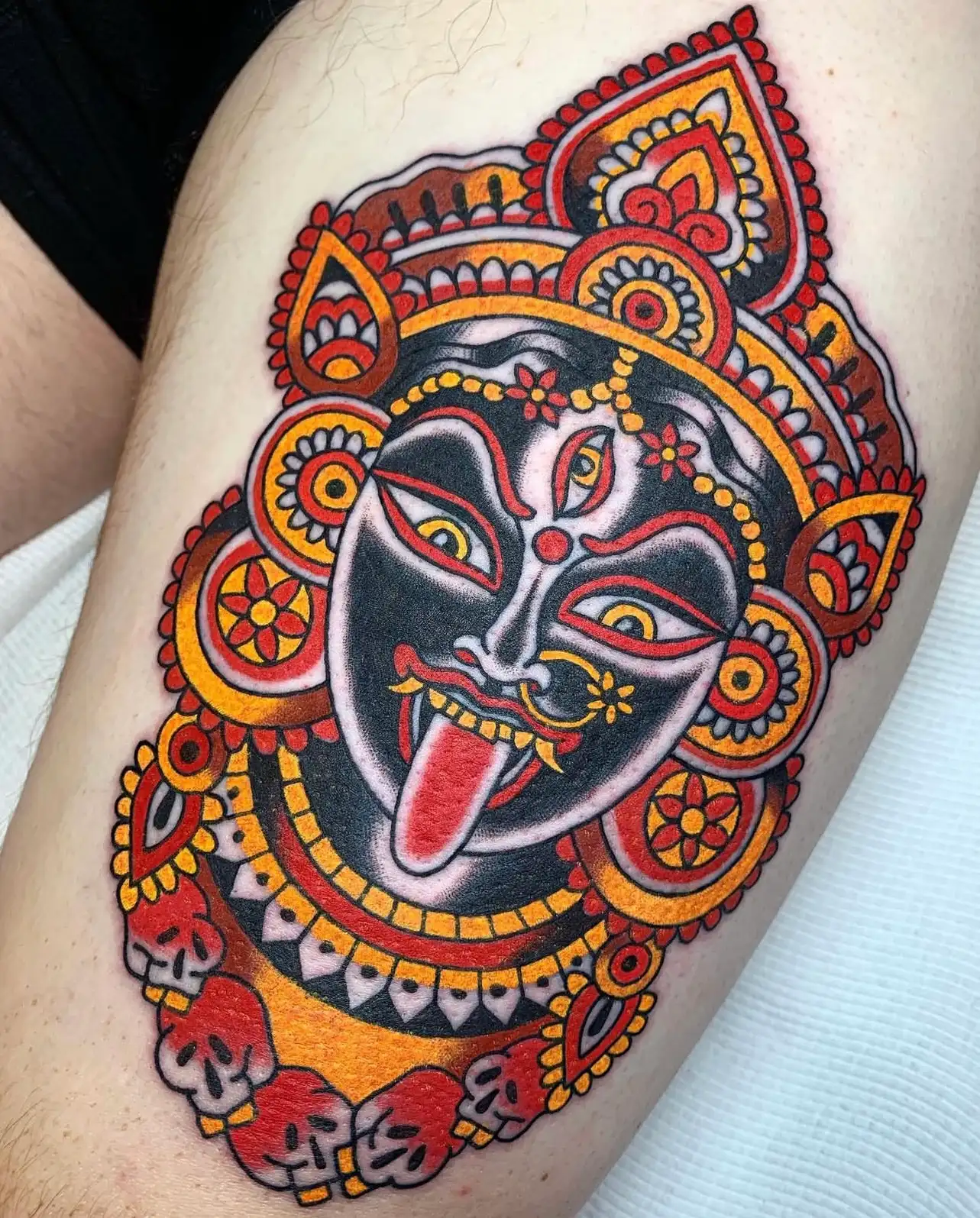
I sometimes forget when I tattoo every day, and I remember when I get tattooed, and it really humbles me because it is a journey and with such body transformation comes pain. I do see attitudes change after. In fact, I receive the most beautiful emails months and years after from my clients/friends of how strong they feel in their skin. I decided to create a community chat with my clients because these women all shared a journey with me and now it makes me smile that they have become friends and catch up from time to time and collaborate on projects.
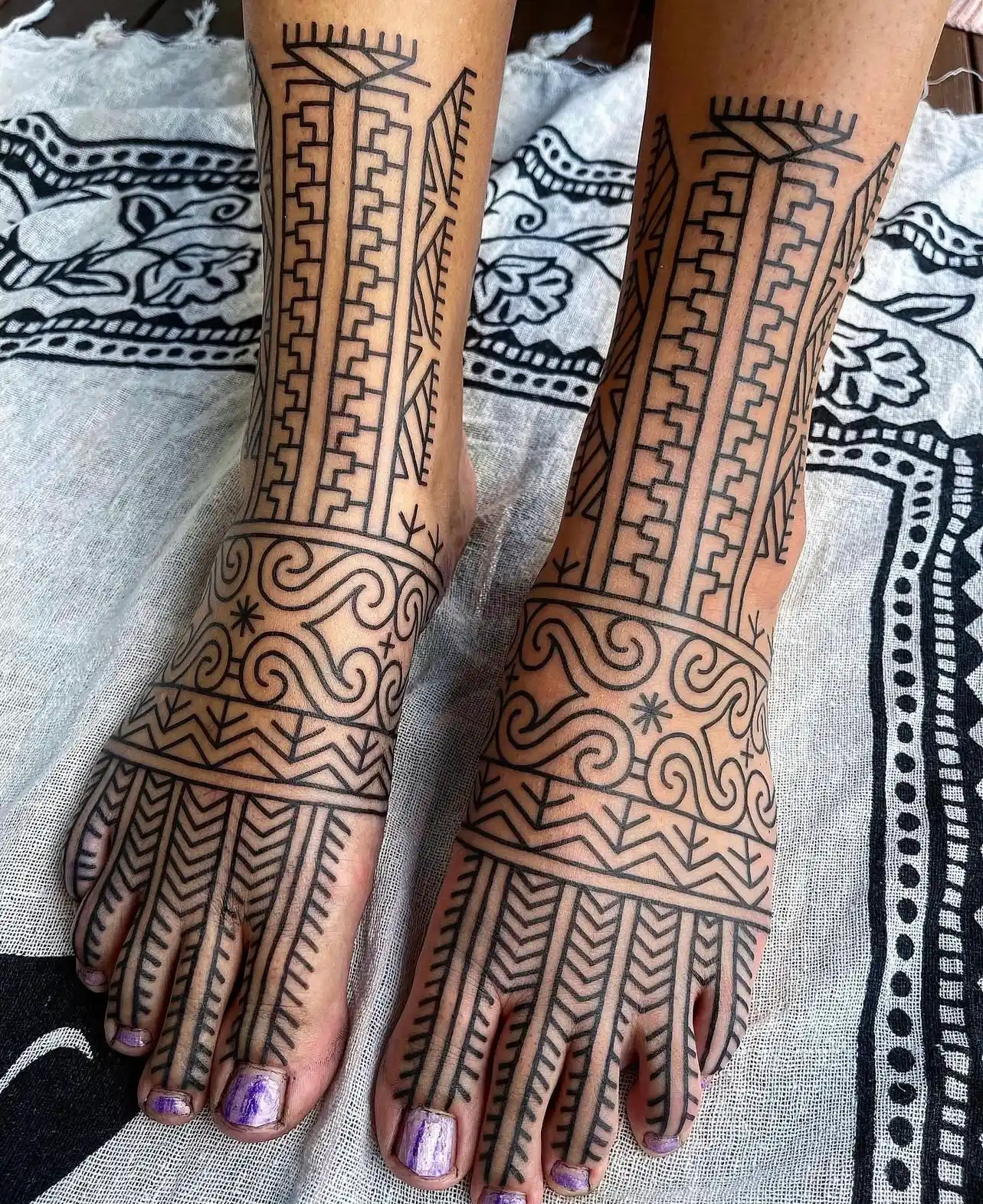
How do you like to work with your customers? Do you consider the tattoo to be a collaboration? What kind of ideas do customers bring to you and how do you turn those ideas into tattoos?
It depends on whether the email I get is someone wanting a flash that I have posted or if someone is wanting a tribal chest/sleeve/back etc. If it is a flash piece, then it is very easy to communicate the booking via email as people see the finished product/painting and know somewhat what they will get. When the time comes, it’s very nice to then meet the client in person and connect because I am very grateful that they want a piece of my work.
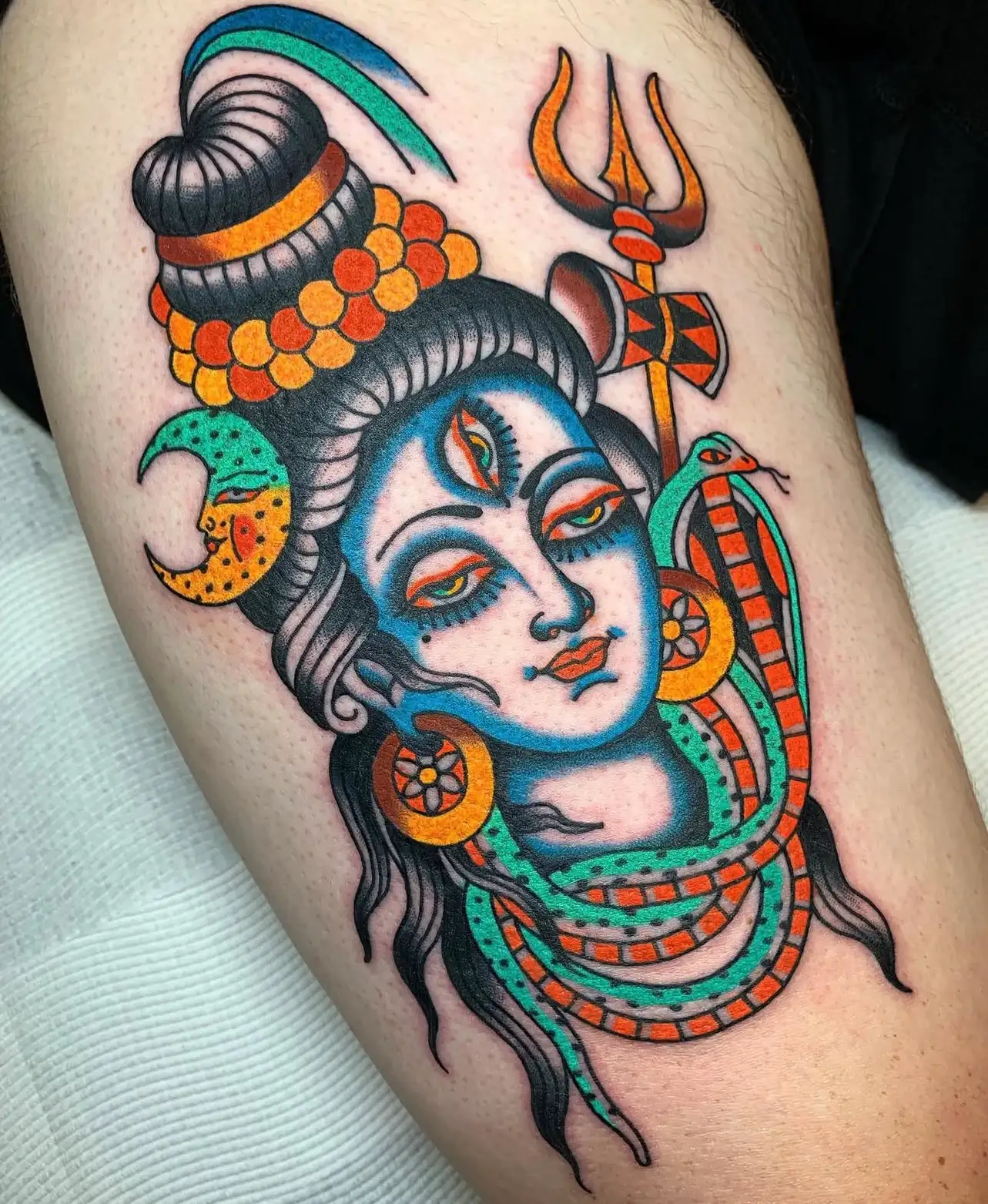
If it is the latter, I usually bring people in for consults because it is important to connect in person and feel a sense of comfort. By interacting in person, I can understand what a person wants and I’m able to spend time asking questions as well as taking tracings of the body in order to commence drawing the design for the tattoo.
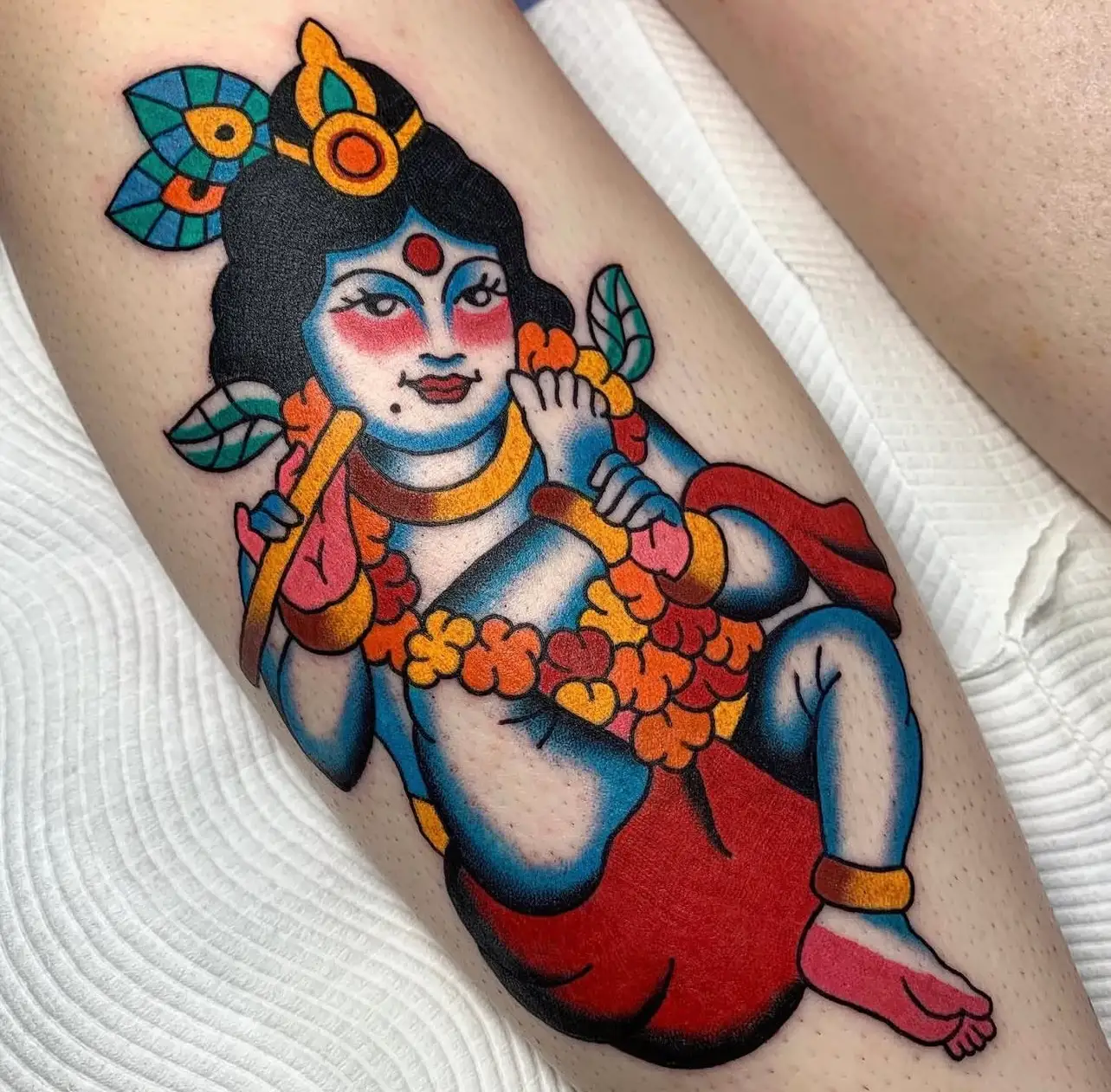
I always have the option for consults, whether small or big or someone who wants to get their first tattoo – these are permanent markings and big decisions, so I want clients to feel happy and safe if they wish to get tattooed by me. Also, this allows for the tattoo concept to be a collaboration.
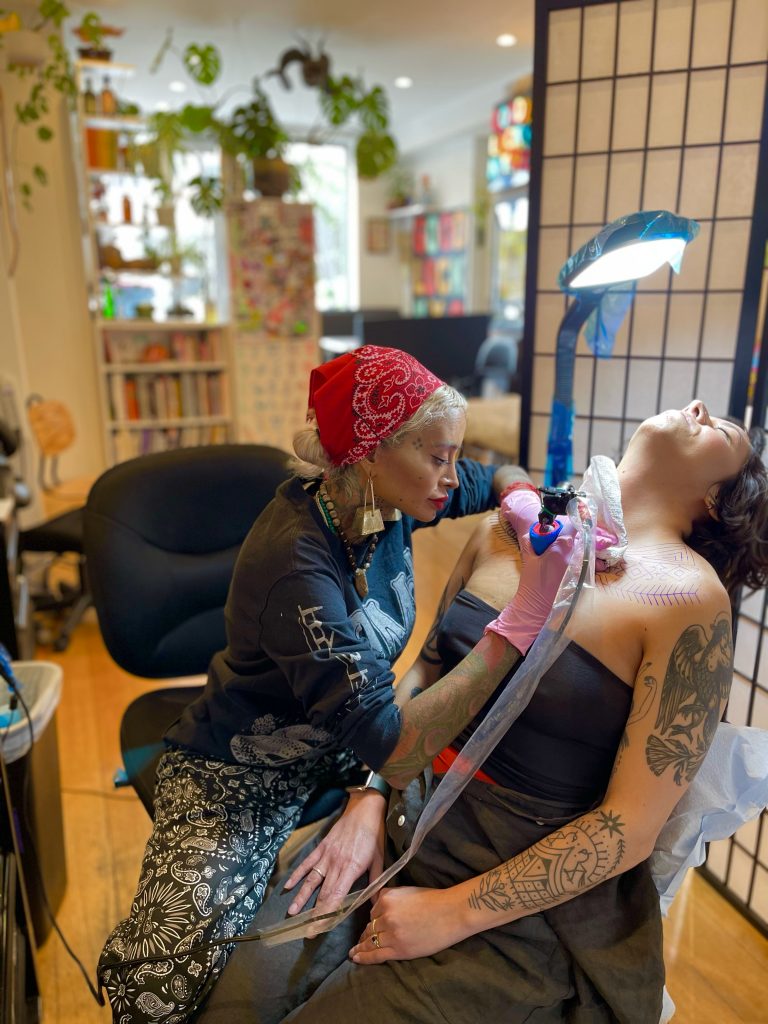
What’s your studio like? Is the environment you tattoo in important to the process?
I work at the wonderful Good Luck NYC in Brooklyn. It is a great creative space whereby everyone there does amazing work – which inspires me. Everyone there is always willing to help when it comes to talking about art or tattoo techniques. There is a lot of sun that comes through the shop and it has a lovely energy so I feel very lucky to be a part of their team.
For sure, the environment is important because tattooing is very tricky. For example, everyone’s skin is different, sometimes stencilling the tattoo can be challenging, so when I am in a peaceful, friendly and supportive environment, I can calm down and do the tattoo the best I can. I always want to try my best and to make my clients smile.
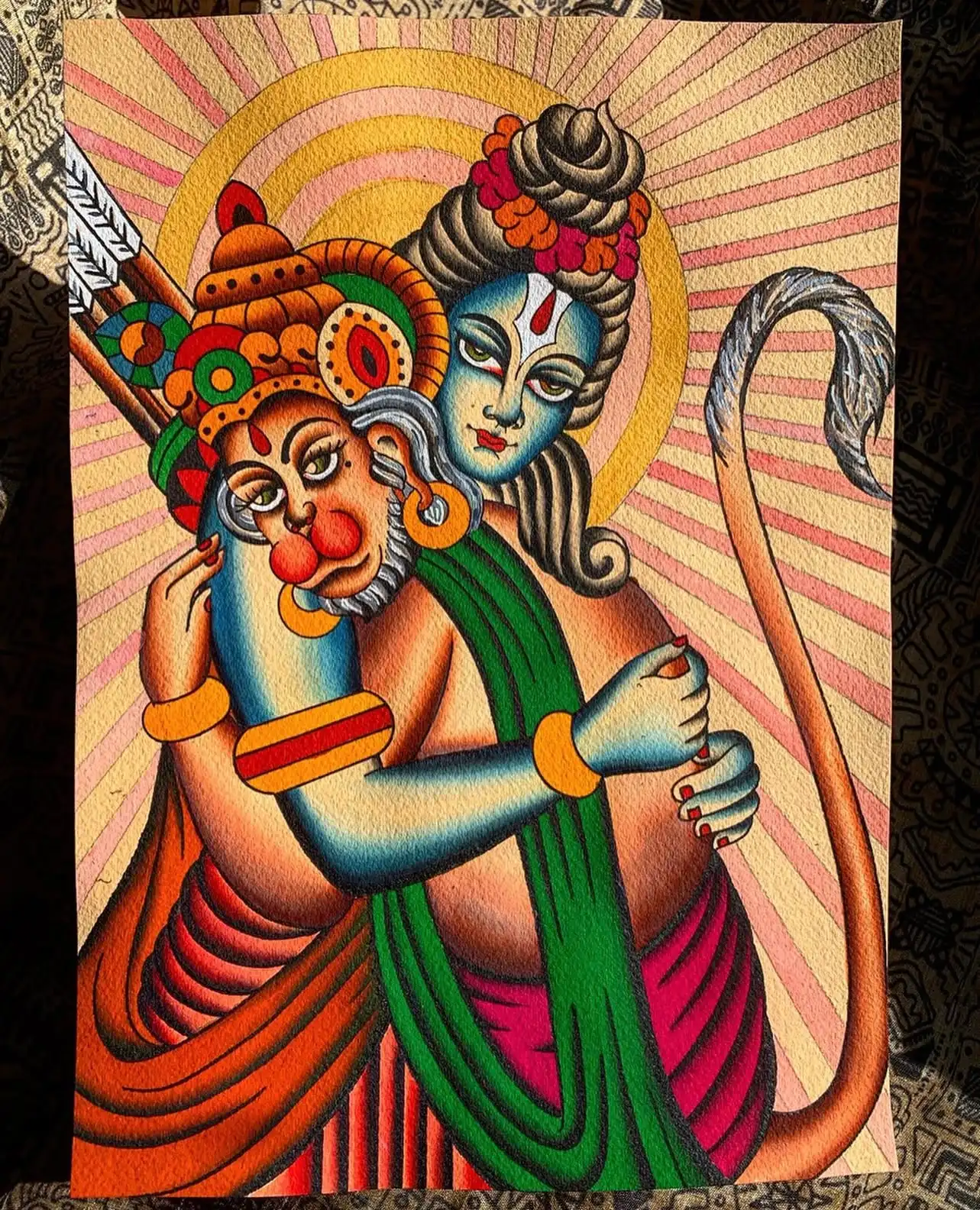
Are you doing any guest spots this year? And how do we book in?
Right now, for the summer, I plan to stay in New York. As I’ve just moved to the States –almost a year ago. For me, it is important to remain focused, paint and build a local clientele. However, I will do guest spots through the USA after the summer. I have not set in stone any particular places but this is something I’m exploring. The best way to book in with me is by emailing me. My body of work is on my Instagram page – gunga_ma – and my bio on my Instagram page has my email enclosed. This way people can see the tattoos I’ve done and the new designs that are available. My email is: swasthikiyengartattoos@gmail.com
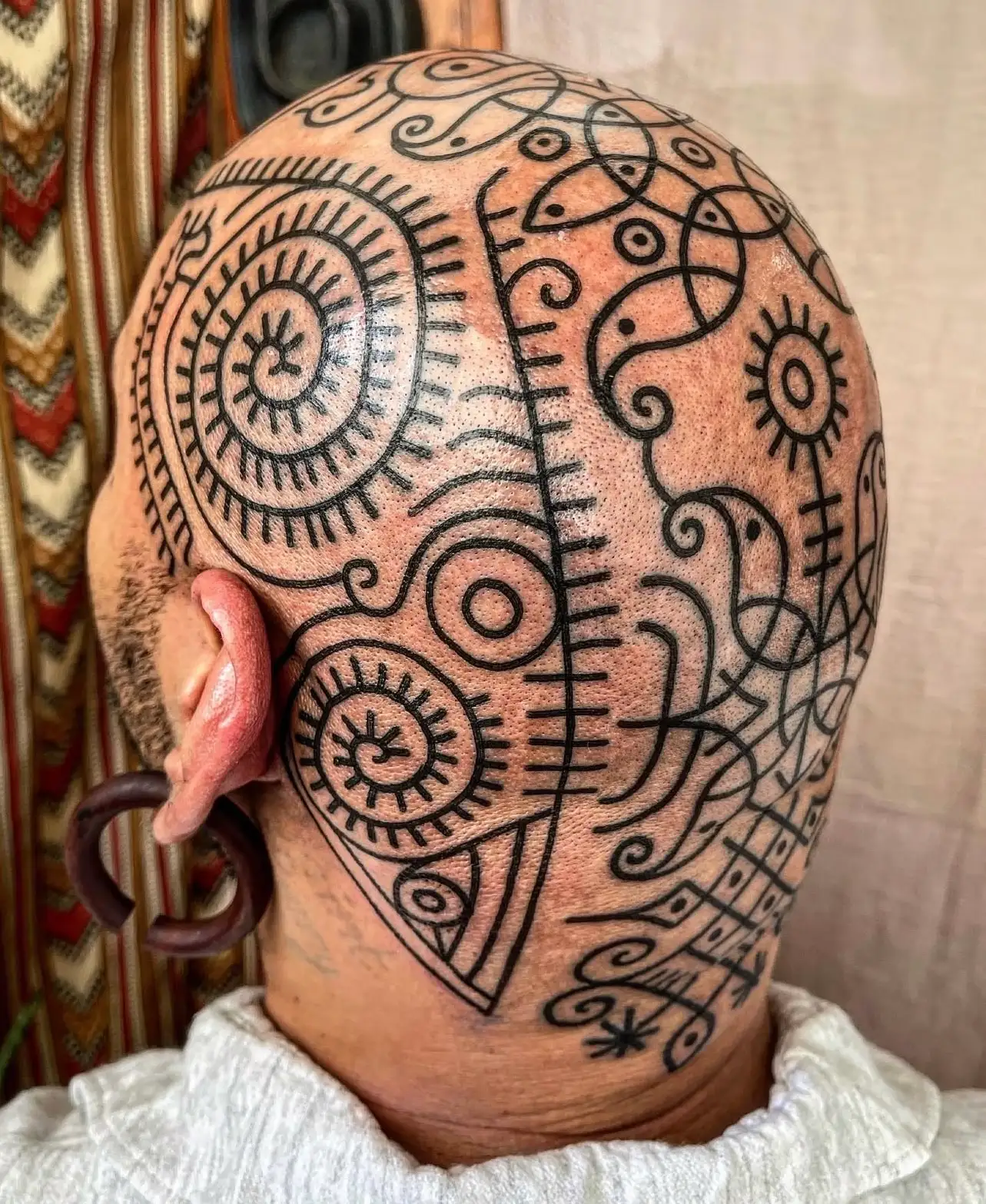
Do you have any thoughts about the industry as a whole? Its past and its future?
Honestly, I don’t feel I’ve been tattooing long enough to say because I am still very much a student. I know that the tattooers I’ve met in my journey here and the people I admire have been so kind in sharing their knowledge of tattoo applications and executions, which has been so amazing. So I am very grateful to meet these tattooers and be able to learn from them.
I also think now, especially with social media, it is so cool to see so many different styles of tattoos/art that inspires and motivates me. It is awesome now we have access to more things within the tattoo industry, such as different types of machines etc.
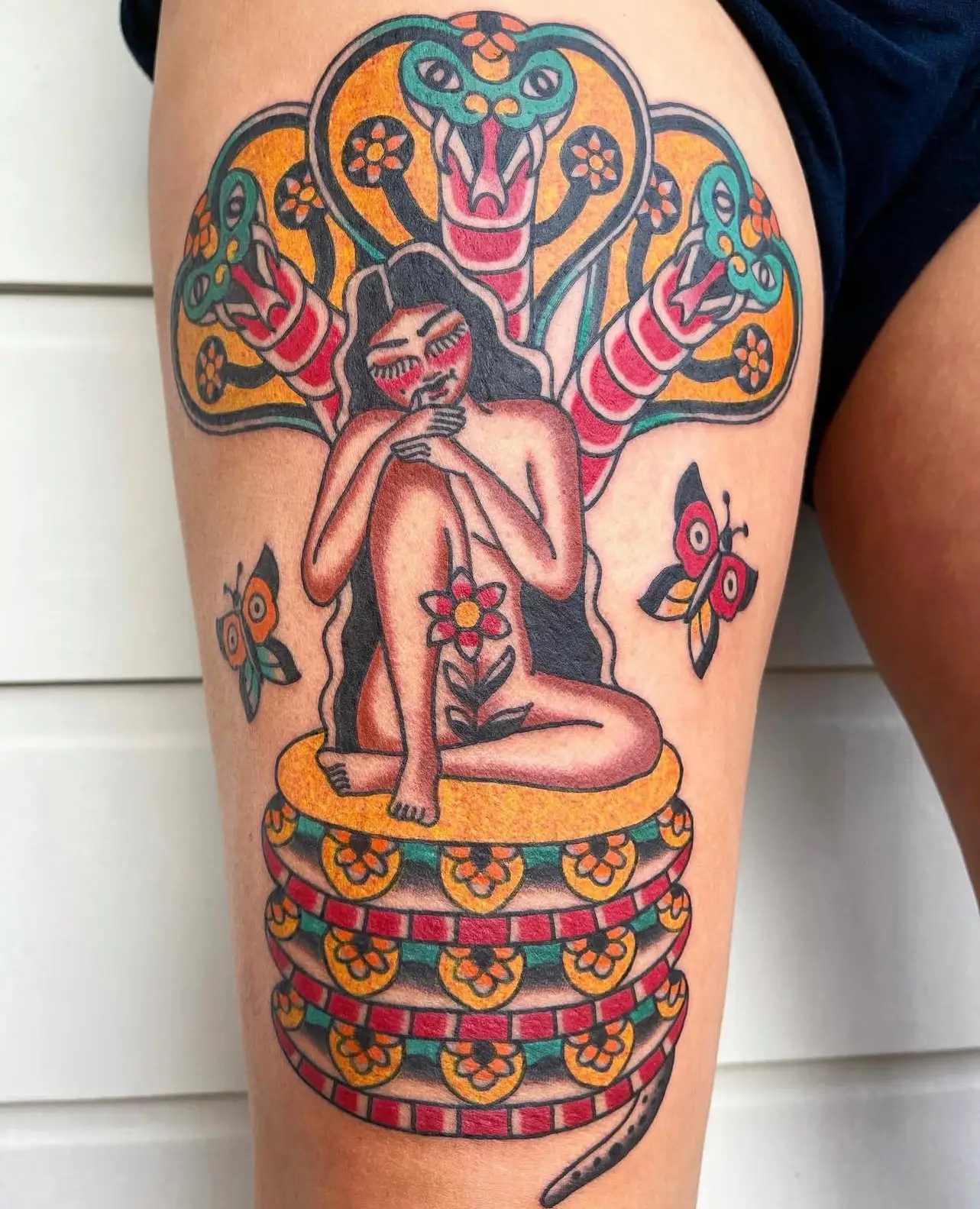
What path are you on next and where would you like the style of your work to go?
I would like to move towards doing larger bodysuits/larger projects such as sleeves within my tribal Indian work – fingers crossed.
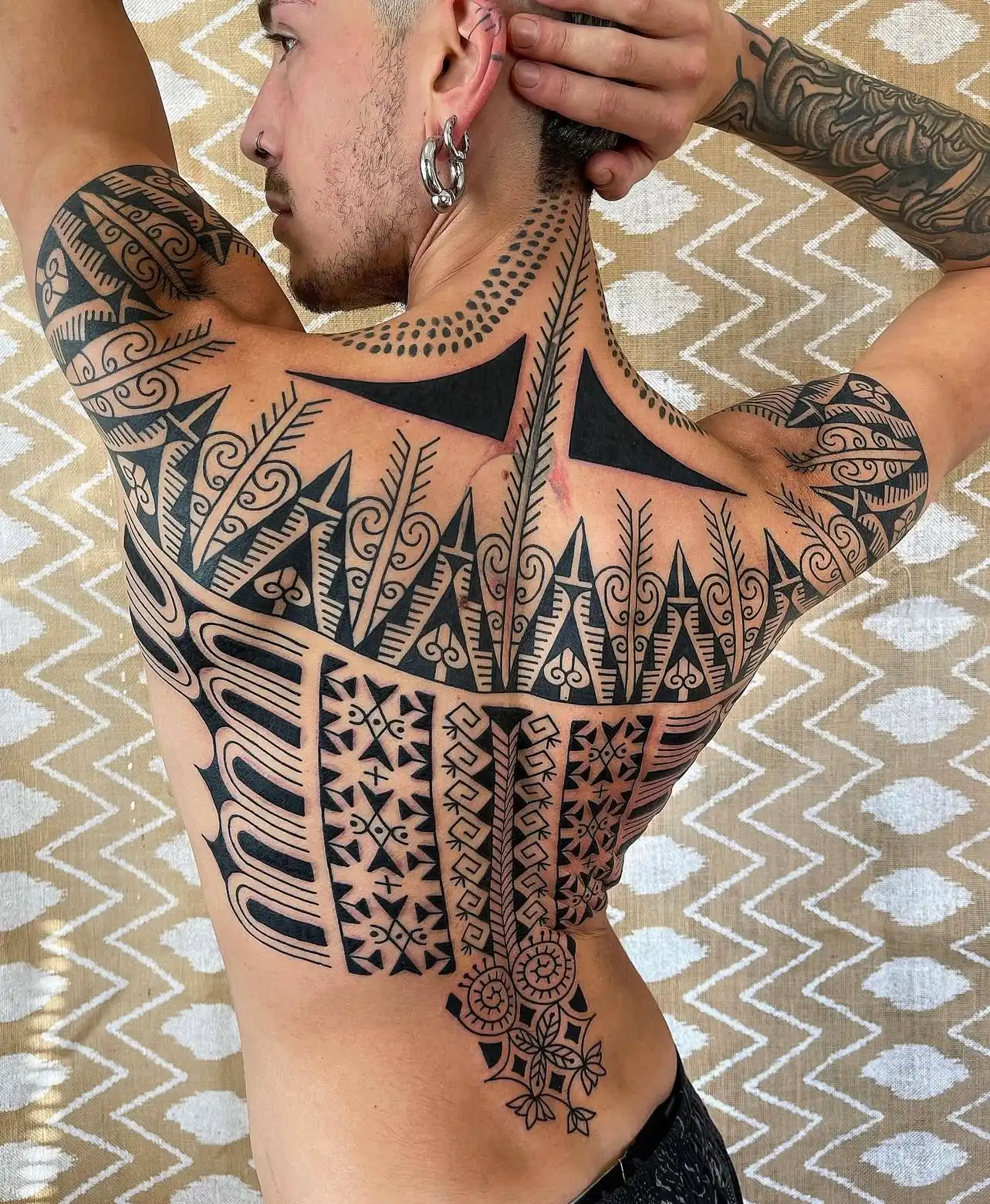
I just really want to thank you for giving me this opportunity to be able to talk a little bit about my culture and tattooing within my culture to your readers on your platform because I think what you both do is truly great. I also want to thank everyone that reads this interview, and my emails are always open if you want to get tattooed here in New York. I look forward to hearing your stories and what brought you to want to get tattooed. Thank you again.
We can’t wait for the next step in your journey. Follow: gunga_ma
